On October 19-20, 2025, the "Shanghai Medical Forum – Artificial Intelligence in Medicine Sub-forum," co-hosted by the Fudan University Institute of Intelligent Medicine and Huashan Hospital affiliated with Fudan University, and the "2nd International Conference on Intelligent Medicine," hosted by the Fudan University Institute of Intelligent Medicine, were grandly held in Shanghai. Under the theme "Intelligent Medicine Integration, Gathering Wisdom for the Future," the conferences brought together renowned experts, scholars, and industry representatives from China, Germany, the United States, and other countries and regions. They focused on cutting-edge topics such as large medical models and clinical translation, bioinformatics, value mining and application of big health data, real-world research and electronic health records, intelligent medical imaging, and intelligent pharmacy, sharing the latest research progress and trends, and engaging in in-depth discussions on global exchange and cooperation in the field of intelligent medicine.
Shanghai Medical Forum – Artificial Intelligence in Medicine Sub-forum
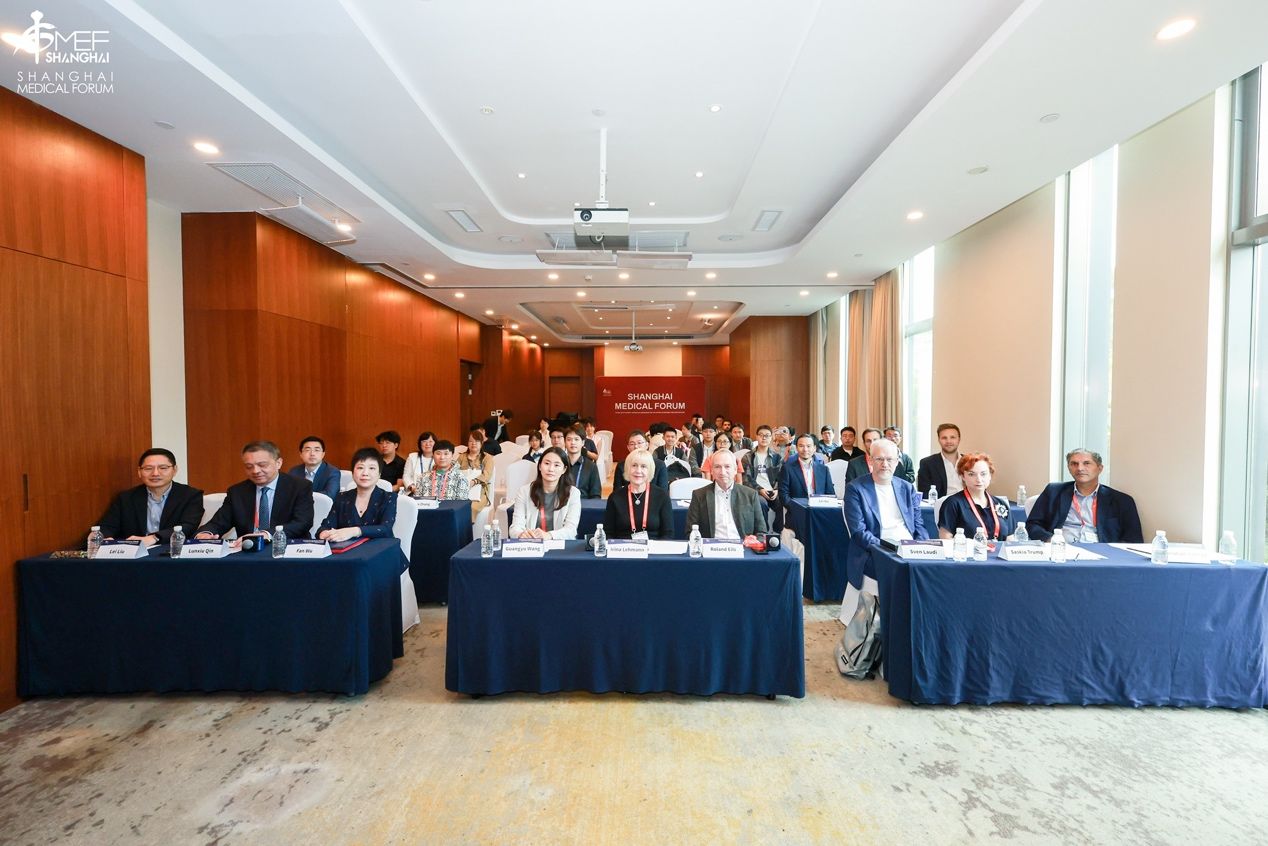
The AI in Medicine Sub-forum commenced at 9:00 AM on October 19. The first half was chaired by Professor Qin Lunxiu, Vice President of Huashan Hospital, with an opening speech by Professor Wu Fan, Vice Dean of the Shanghai Medical College of Fudan University.
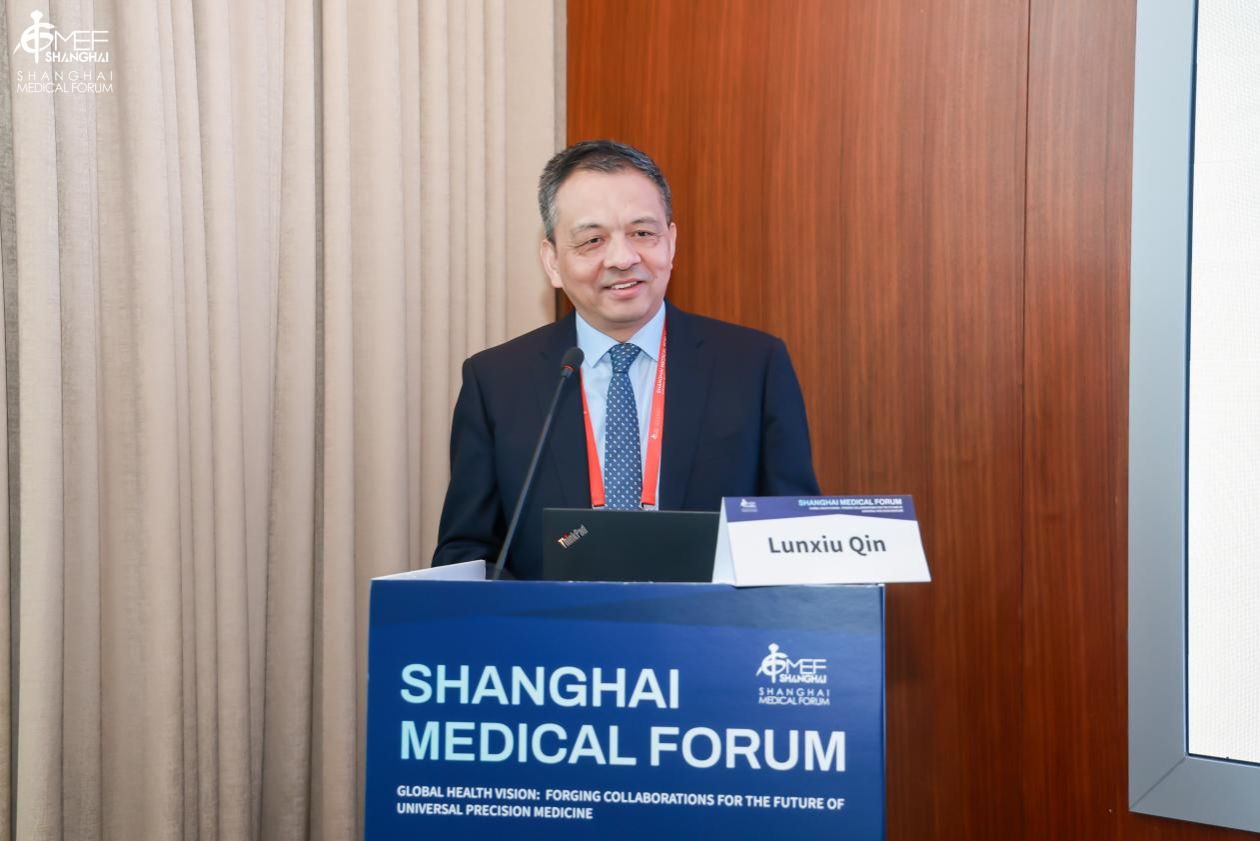
Dean Wu Fan, on behalf of the Shanghai Medical College, extended a warm welcome and sincere thanks to the guests, with special greetings to long-term international partners, and acknowledged the meticulous organization by the hosts, the Fudan University Institute of Intelligent Medicine and Huashan Hospital. She reviewed the college's adherence to the educational philosophy of "Upholding Justice and Illuminating the Way," its deep accumulation in clinical medicine, basic medicine, public health, pharmacy, and other fields, and noted the college's recent active promotion of interdisciplinary integration of "Medicine + Medical Humanities, Medical Engineering, Medical Science," particularly accelerating the layout in the "AI for Science" direction to explore new paradigms for medical innovation and education. Dean Wu emphasized that AI is profoundly changing medical research and clinical practice, and this forum, gathering wisdom from multiple countries, builds a cross-disciplinary, cross-regional, and cross-industry exchange platform, effectively promoting the sharing of the latest achievements and innovative practices. Finally, she stated that the Shanghai Medical College would continue to uphold an open and inclusive attitude, working with global partners to explore the frontiers of intelligent medicine and jointly address major challenges to human health, and wished the forum complete success.
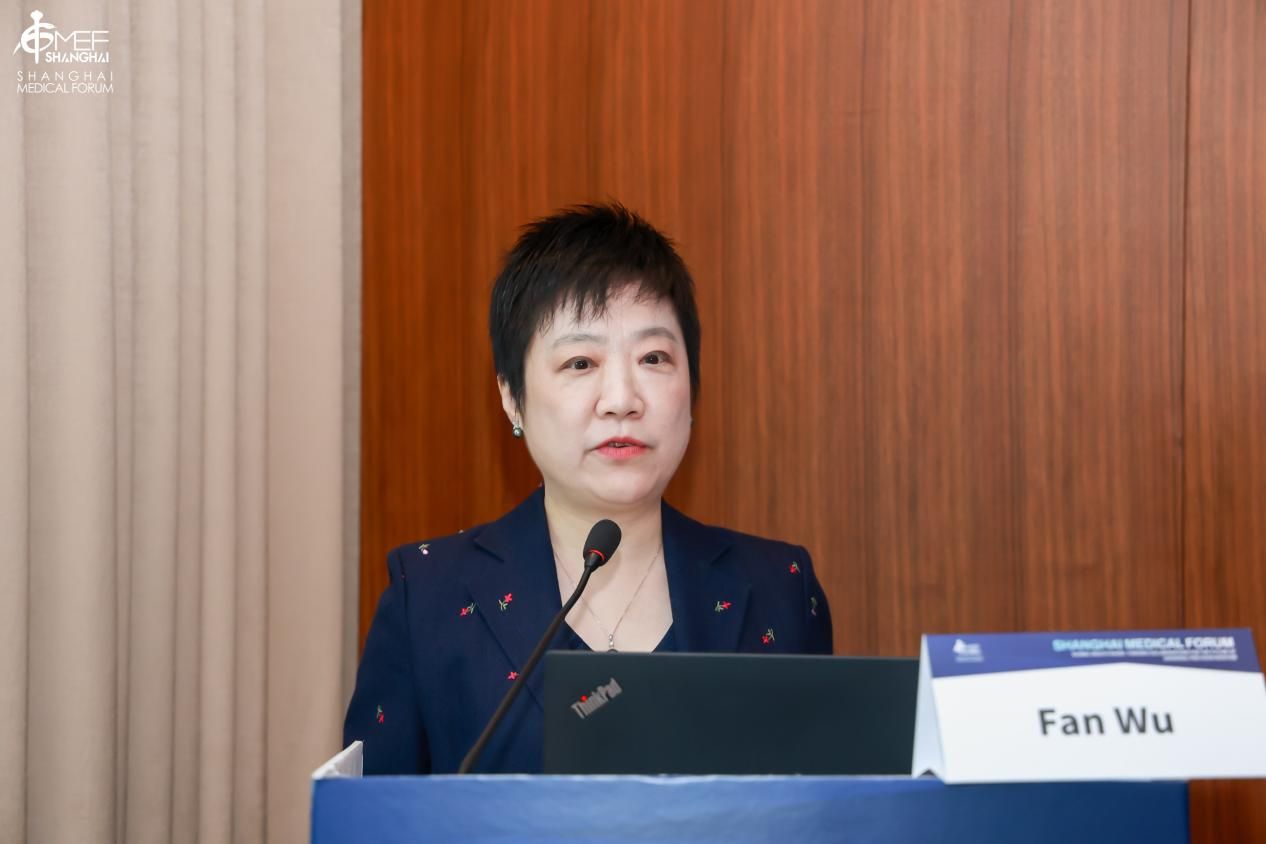
The sub-forum's first keynote was delivered by Professor Roland Eils, Executive Director of the Fudan University Institute of Intelligent Medicine and Founding Director of the Berlin Institute of Health at Charité, titled "Intelligent Medicine in the Era of AI and Big Data." He pointed out that, under regulatory and ethical constraints, less than 5% of clinical data is currently used for training large language models (LLMs), but open-source models like DeepSeek provide a feasible path for local hospital deployment, performing close to GPT-4o in multiple clinical tasks and outperforming other open-source solutions (related published in Nature Medicine). Addressing the "unstructured, complex, and messy" nature of clinical data, his team proposed a "linearized EHR" method, feeding raw medical record text directly into LLMs, allowing the models to autonomously learn terminology and annotation language, significantly outperforming traditional EHR foundation models reliant on standardization. This offers a new approach to bypass complex FHIR/OMOP processes, reducing costs and improving efficiency. In preventive medicine, based on data from over 730,000 individuals and 7.5 million person-years of follow-up, Prof. Eils demonstrated the capability of full-phenotype risk modeling to inexpensively predict approximately 1500–2000 disease endpoints, showing strong generalization performance across different genetic backgrounds and healthcare systems. He emphasized that only by truly adapting foundation models to the complexity of the real clinical world can medicine transition from "reactive" to "predictive," leveraging historical data resources to support precise prevention and system optimization at both population and individual levels.
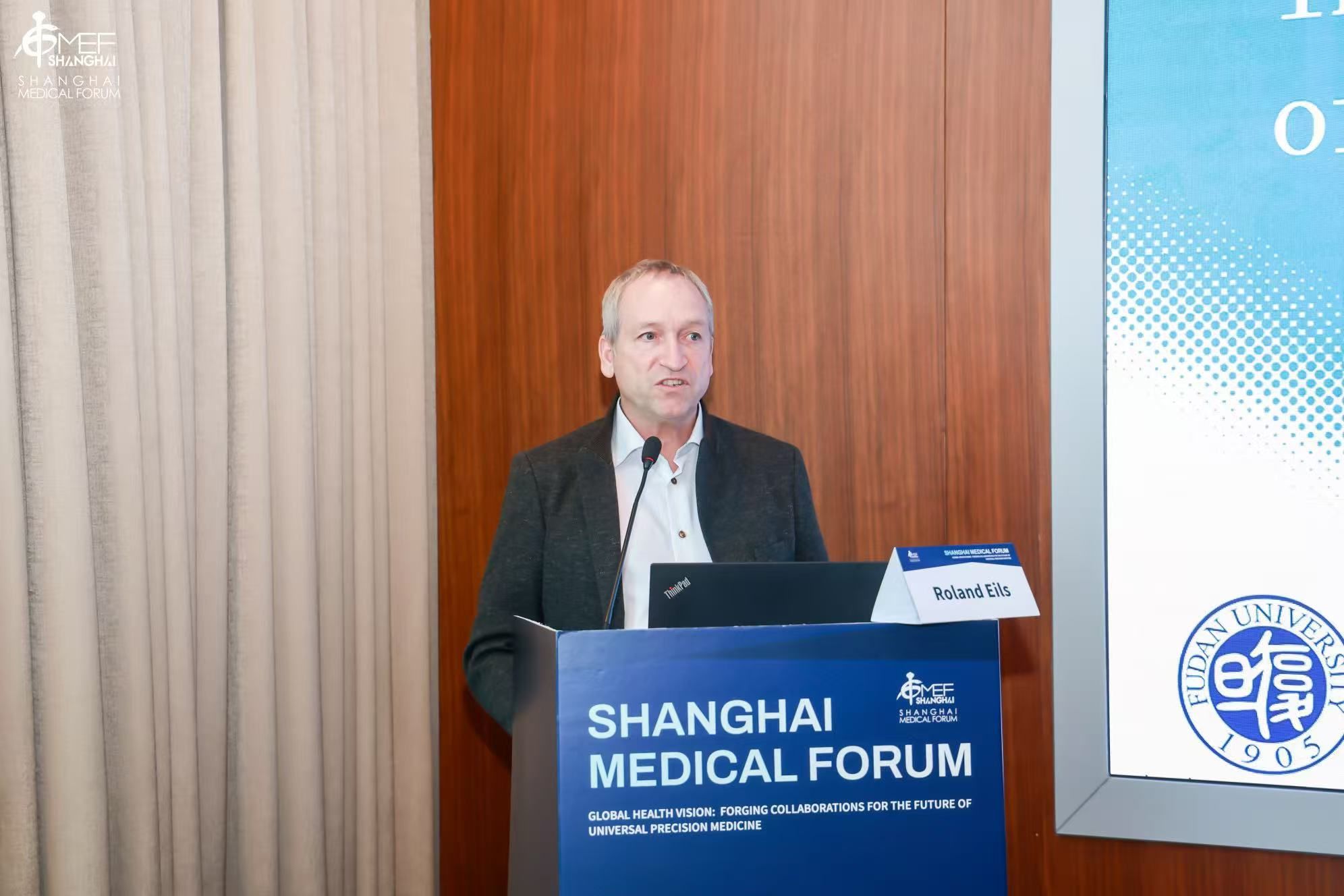
Professor Wang Guangyu, Dean of the School of Information Intelligence and Digital Health at Beijing University of Posts and Telecommunications and Deputy Director of the State Key Laboratory of Networking and Switching Technology, presented on "Research of Biomedical Foundation Models and Translational Medicine," systematically showcasing an innovative closed loop from large models to imaging and molecular levels. She highlighted progress in three areas: First, the launch of the general medical large model MedFound-176B, trained on large-scale medical corpora. By aligning with physicians' reasoning logic and clinical standards, the model can not only answer questions but also make safety judgments following clinical reasoning, performing excellently in cross-specialty and rare disease scenarios, providing significant assistance to junior and mid-level doctors. Second, in medical imaging, the team established an ultra-large-scale, multi-center data resource and released a new model, MedSegX, which operates stably across different hospitals and tasks, supporting zero-shot/few-shot segmentation and recognition, adapting to complex real-world environments. Third, in the "AI for Life Sciences" direction, starting from protein structures, the team proposed a new method for predicting protein-RNA interactions, supporting applications like antibody optimization and vaccine design. Prof. Wang presented a complete closed-loop system from data to models, evaluation to application, providing strong support for the clinical implementation and translation of medical AI.
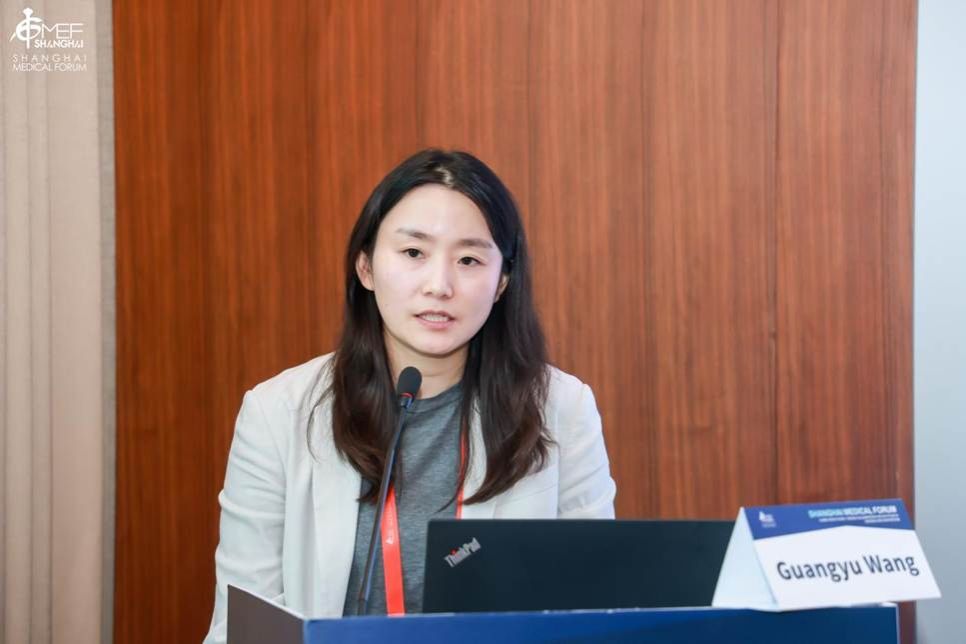
Professor Sun Lihua, Young Investigator at the Fudan University Huashan Hospital Medical Research Institute and Guest Professor at the Turku University PET Centre, delivered a speech titled "Intelligent Cognitive Neuroscience with Naturalistic Stimuli." She introduced research using "naturalistic movies/laughter/dynamic facial expressions" as stimuli to study the human brain's emotional and social cognitive networks under high ecological validity conditions. The work revealed response differences in networks like the striatum, anterior insula, and motor preparation among healthy populations, prisoners with mental disorders, autism spectrum individuals, etc., identifying phenotypes such as "violence-reward coupling abnormalities" and "reduced empathy/synchronization." The research method faced challenges in annotating multi-dimensional emotions, events, and low-level audiovisual features over time. To address this, the team introduced AI/LLM-assisted annotation, automatically generating emotion curves and event labels through frame-by-frame extraction and standardized prompts, achieving consistency comparable to manual scoring and significantly reducing annotation workload, facilitating large-sample and multi-center studies. Simultaneously, she pointed out the need for caution regarding cultural/genre bias and subjectivity in practical applications, advocating for building reproducible workflows of "AI pre-annotation + human verification," combined with multi-modal alignment like imaging and electrophysiology, to serve practical scenarios such as clinical screening, rehabilitation assessment, and educational content grading.
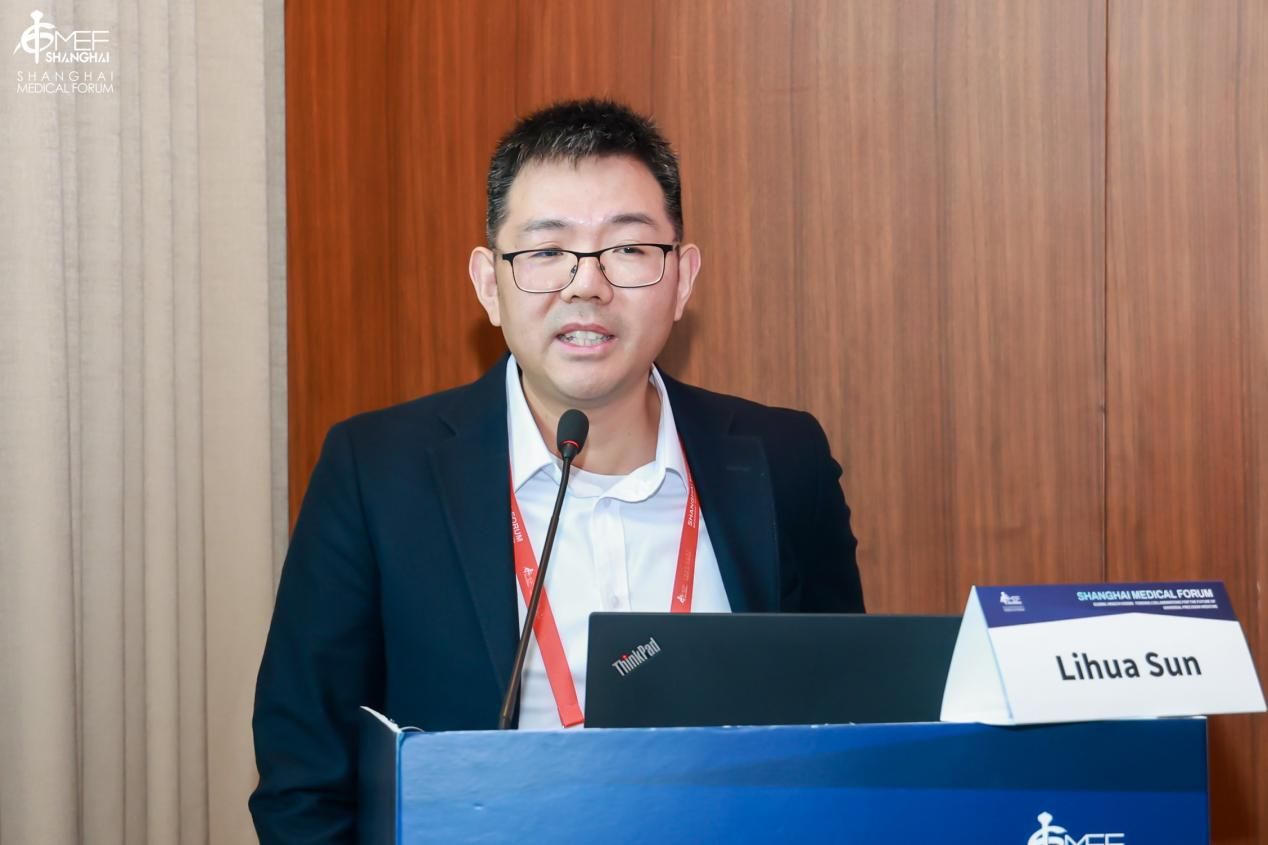
Professor Wang Yujiang, Co-Director of the Machine Learning Lab at the Oxford-Suzhou Centre for Advanced Research (OSCAR), focused on "Democratising medical records for training clinical AI," addressing how to effectively deliver clinical records to AI researchers under strict privacy constraints. He first outlined the systematic accumulation of the Oxford CHI team in computational healthcare AI, covering meta-learning, generative modeling, Bayesian and reinforcement learning, NLP/LLMs, and multimodal foundation models, with significant impacts in DrugGPT, AI diagnosis for COVID-19, and industrialization. The report noted that traditional anonymization and GAN synthesis face re-identification and real sample leakage risks in Electronic Health Record (EHR) applications, struggling to balance utility and privacy. The team thus proposed two new paths: First, Dataset Distillation, learning extremely small but functionally "equivalent" condensed sets from original data via distribution matching in the representation space. Evaluation on MIMIC-III, PhysioNet 2012, and Coswara data across 11 types of deep neural networks showed that while maintaining comparable performance, training convergence speed increased by approximately 95%/91%/88% on average, significantly reducing computational and compliance burdens, albeit with limited fine-grained individual utility and some performance trade-offs. Second, Random/Quantum Encoding, employing a four-stage irreversible encoding (random projection or quantum gate sequences combined with Pauli-Z measurement) to retain clinical semantics and suppress sensitive attribute leakage, verified for compatibility between task performance and privacy protection across multiple datasets. These works provide feasible technical paths for data delivery that "both safeguard the privacy red line and preserve research value."
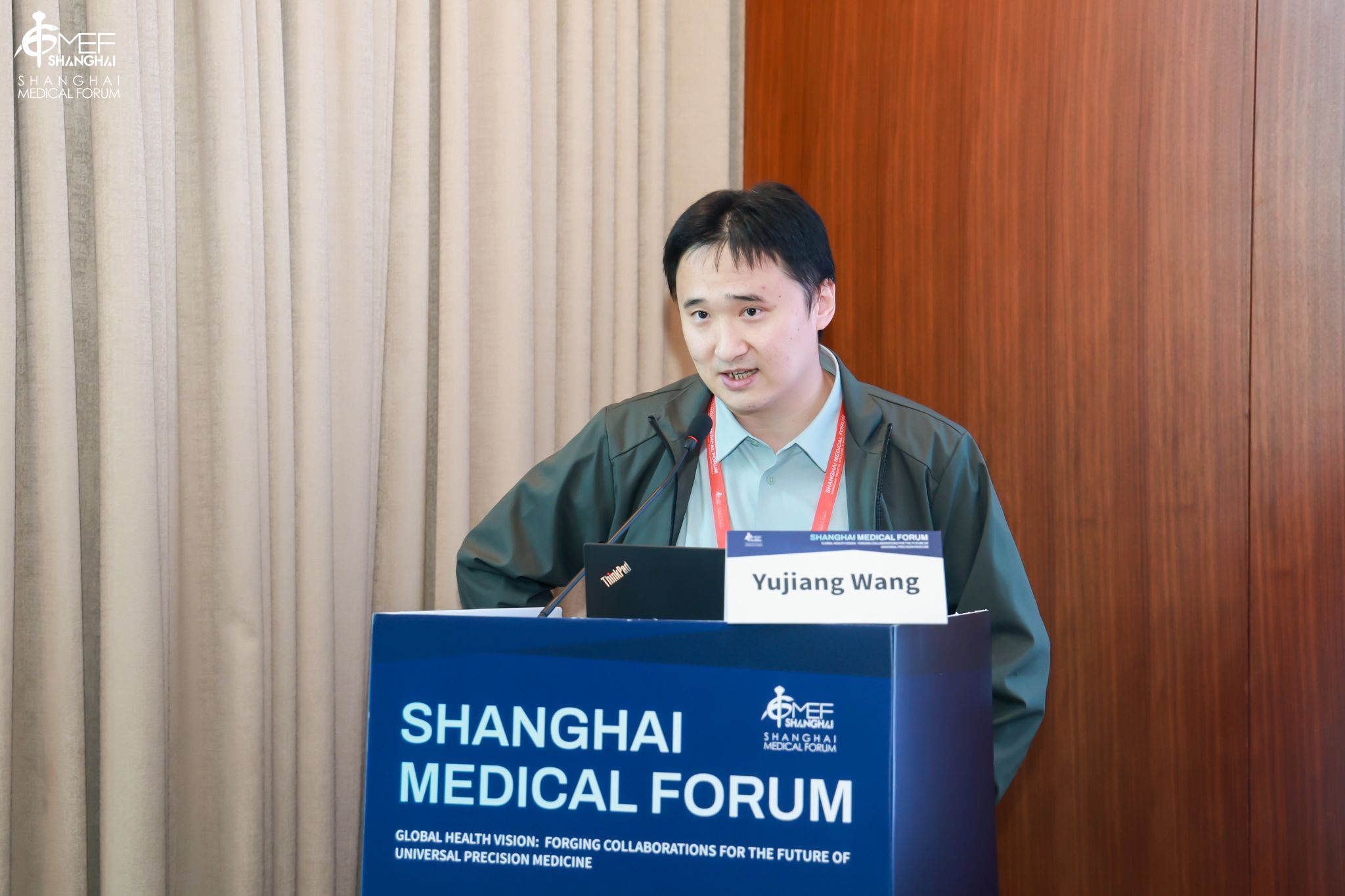
Professor Zhang Bin, Assistant Professor of Computational Biology at Mohamed bin Zayed University of Artificial Intelligence, delivered a presentation titled "RNA Aberration as a Source of Neoantigens," systematically elaborating on the evidence and translational path for "RNA aberrations as a source of neoantigens." The team noted that while traditional personalized neoantigen vaccines targeting gene mutations show early efficacy, they face challenges like high cost, long cycles, and high sample requirements, making large-scale application difficult. In contrast, RNA-level aberrations, particularly Intronic Polyadenylation (IPA), are commonly upregulated across multiple cancers and can generate "public neoantigens" shared across patients, offering a new direction for broad-spectrum vaccines. The team precisely identifies 3' end and intronic polyadenylation events from RNA sequencing using algorithms, and ensures tumor specificity through stringent filtering based on over 6,000 normal samples covering 30+ tissues. Combining long-read and single-cell sequencing addresses the limitations of traditional sequencing in resolving full-length transcripts and tumor heterogeneity. Functional validation showed that these IPA-derived peptides have clear expression and translation potential, and exhibit a high positive rate in immune experiments, with conversion efficiency superior to traditional mutation-derived neoantigens. Ultimately, the team proposed a public neoantigen candidate panel for colorectal cancer, supported by external research. They also released an interpretable antigen presentation foundation model that integrates multi-omics data for end-to-end evaluation of peptide generation and HLA presentation, providing a actionable technical framework for screening and optimizing broad-spectrum neoantigen vaccines.
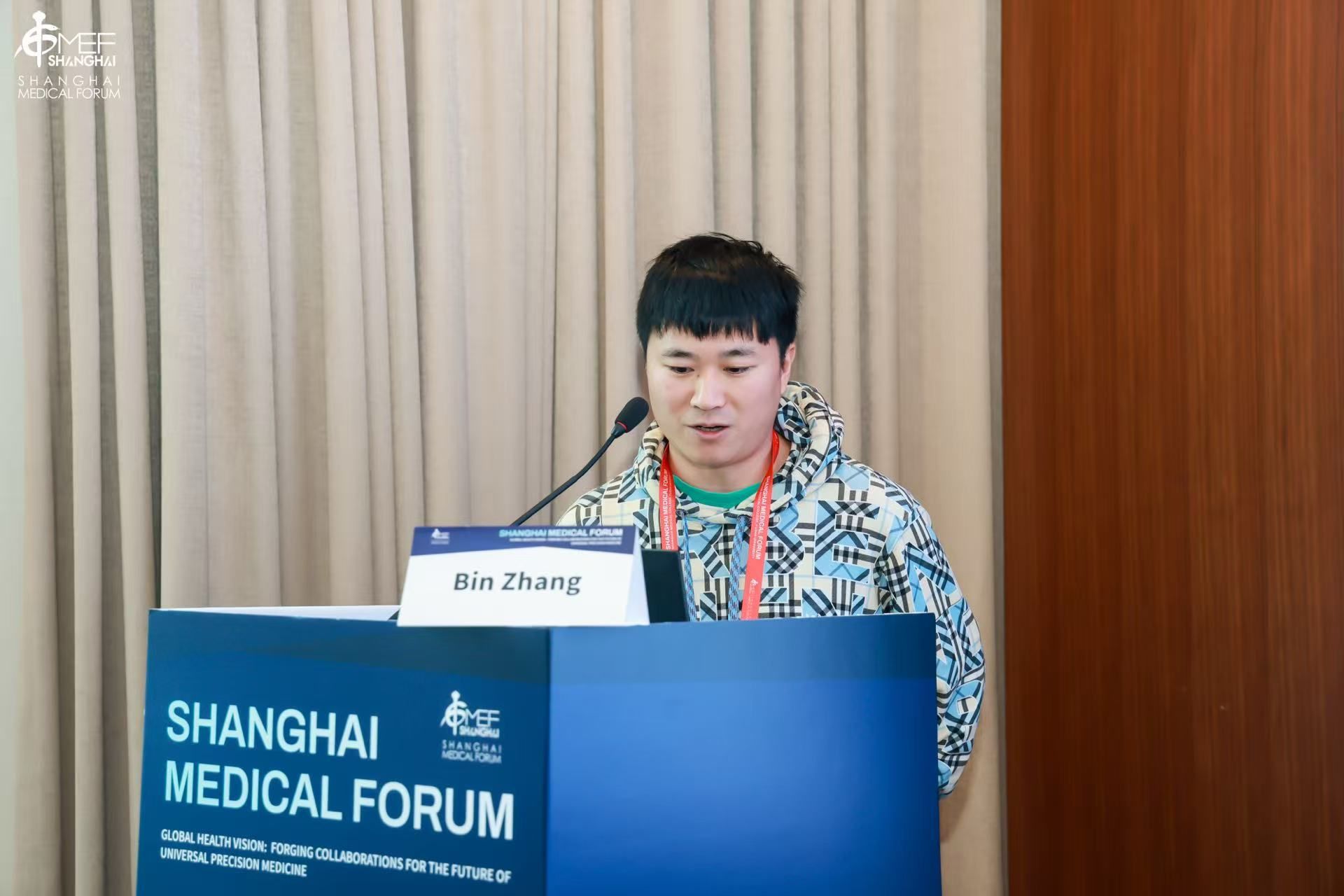
The second half was chaired by Professor Liu Lei, Executive Vice Dean of the Fudan University Institute of Intelligent Medicine, who first expressed sincere thanks to Dean Qin for chairing the first half.
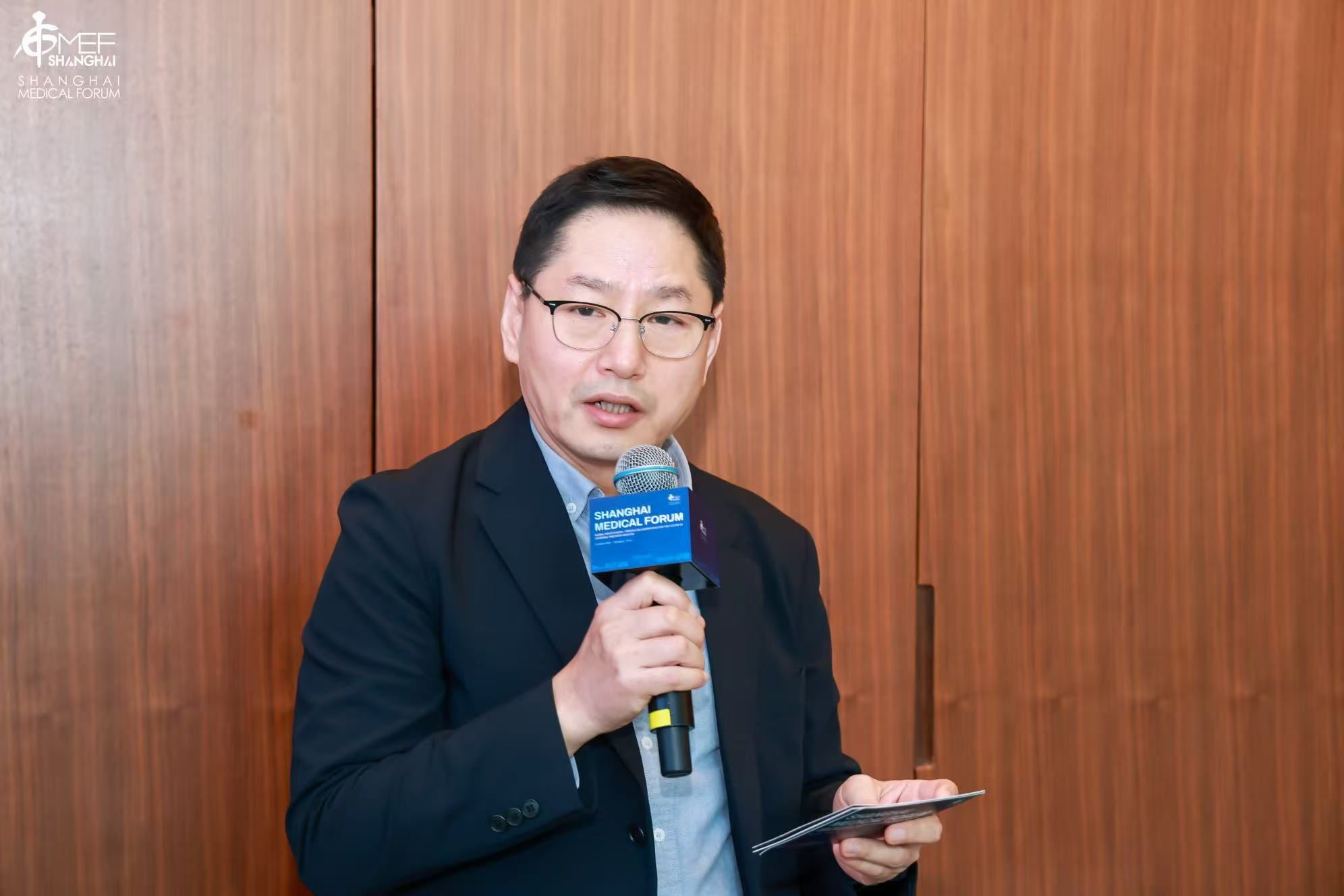
Professor Deng Yanxiang, Assistant Professor of Pathology and Laboratory Medicine at the University of Pennsylvania, presented on "Advancing Biomedical Research with Spatial Omics Technologies," explaining how spatial omics molecular maps in situ within tissues, overcoming the "single-cell, no coordinates" limitation. The report compared two major technical routes: imaging-based offers high resolution but limited target numbers, while sequencing-based covers the whole genome but has lower resolution. The team's core technology, DBiT barcoded microfluidics, couples 2D coordinates with high-throughput sequencing, extending to spatial methylation (Spatial-DMT) and Nanobody-Tn5 driven multimodal parallel assays (ATAC, histone modifications, RNA, protein), enabling multi-layer on the same slice at the same coordinate. Regarding clinical accessibility, the team presented a full FFPE-ATAC workflow and quality assessment, demonstrating stable acquisition of chromatin accessibility maps in human clinical samples. The analysis emphasizes spatial variable genes, spatial partitioning, and graph model inference for reconstructing tissue structure, locating lesion boundaries, and immune infiltration and developmental trajectories. Prof. Deng emphasized that spatial omics is forming a new landscape of "high-resolution—broad coverage—multimodal" synergy, providing translatable new tools and paths for oncology, immunology, development, and pathological diagnosis.

Dr. Zhou Yiming, Deputy Chief Physician of the Gastrointestinal Surgery Center, Department of General Surgery, Huashan Hospital, Fudan University, presented on "From Complex Cases to Primary Care Empowerment: Value and Challenges of Agentic AI in Clinical Medicine," analyzing the value and implementation path of Agentic AI in clinical settings, centered on the theme from complex cases to grassroots empowerment. He explained that compared to traditional Clinical Decision Support Systems (CDS) and single-turn dialog LLMs, Agentic AI constructs a "perception-reasoning-action-supervision" closed loop. It can read medical histories and EHRs to complete differential diagnosis and risk stratification, as well as initiate tests, generate orders/referrals, and follow-up plans, while reducing errors and hallucination risks through uncertainty disclosure and rule verification. Applications cover both ends: supporting multi-morbidity diagnosis and treatment, perioperative management, and oncology multidisciplinary team evidence retrieval in complex cases; and improving triage, critical value identification, chronic disease educational decision-making, referral medication verification, and follow-up efficiency at the primary care level. Practice shows this technology can reduce missed diagnoses and unnecessary tests, improve guideline adherence and referral quality, alleviate documentation burden, and enhance patient experience. Finally, he also pointed out challenges and countermeasures: the need to control hallucinations and long-tail problems, ensure privacy and audit traceability, clarify human-machine responsibility and hierarchical control; implementation advice suggests starting with low-risk modules (triage, documentation, follow-up, medication), establishing safety guardrails and local RAG rule integration, following steps of "shadow mode—A/B testing—controlled rollout" to generate real-world evidence, and achieving continuous empowerment of primary care through regional coordination and cloud-based multidisciplinary teams.
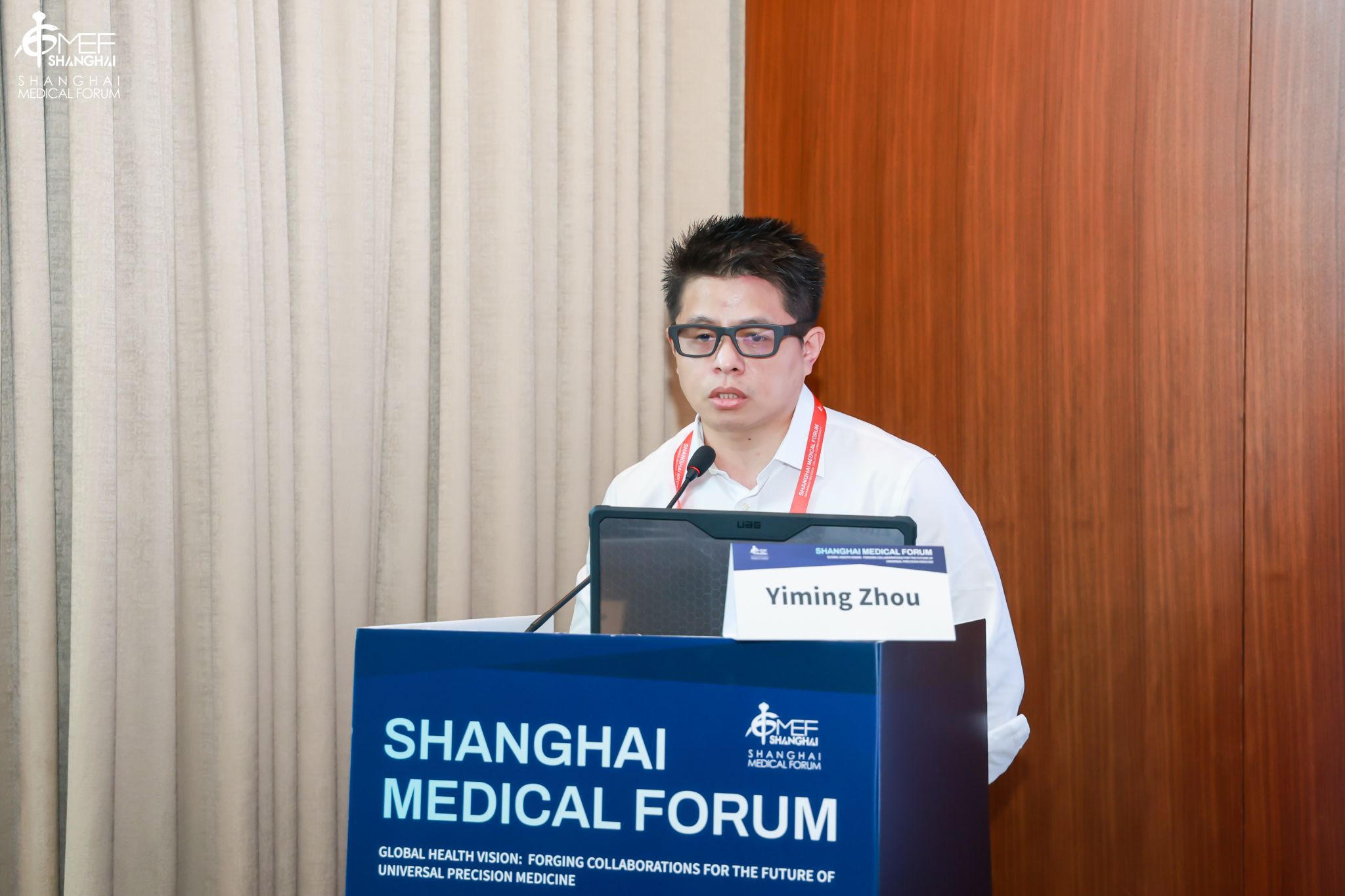
Dr. Shi Zhengzhou, Dermatologist at Huashan Hospital, Fudan University, shared "Development of an AI-Based Image Analysis System for Accurate Assessment of Vitiligo Severity." The presentation focused on the objectification and reproducibility of vitiligo severity assessment, proposing an integrated solution combining standardized acquisition and AI image analysis. The system includes built-in uncertainty heatmaps and a one-click physician revision function, forming an "AI pre-annotation—clinical correction—continuous learning" closed loop, capable of generating objective reports within seconds during outpatient visits, improving the objectivity of trial endpoints and supporting remote follow-up quality control. The team also proposed risk management plans addressing biases related to skin tone and device domain, interference from glare/cosmetics, and privacy and SaMD compliance issues, tackled through multi-center, multi-device, cross-skin tone real-world validation and continuous monitoring, bringing a new paradigm of standardization, quantification, and traceability to vitiligo assessment.

The Shanghai Medical Forum – AI in Medicine Sub-forum, as the precursor to this series of academic events, successfully created a high-quality, high-density atmosphere for cutting-edge exchange. Focusing on core directions like large medical models, bioinformatics, and big health data, numerous top domestic and international scholars shared key advances from algorithmic innovation to clinical implementation. This sub-forum not only fully demonstrated the vitality and depth of intelligent medicine frontier research but also laid a solid foundation for subsequent cross-disciplinary, cross-institutional collaboration, clearly outlining the future landscape where AI, as a core driver, is continuously transforming the paradigms of medical research and practice.
The 2nd International Conference on Intelligent Medicine
The 2nd International Conference on Intelligent Medicine opened on the afternoon of October 19 at the Shanghai Longemont Hotel. The opening ceremony was chaired by Professor Liu Lei, Executive Vice Dean of the Fudan University Institute of Intelligent Medicine, with a welcome address by Professor Roland Eils, Executive Director of the Institute and Member of the German National Academy of Sciences. He stated that AI is leading a new technological revolution, profoundly reshaping medical research, disease prevention, and clinical diagnosis and treatment, and expressed his hope that this conference would become an internationally influential exchange platform in the field of intelligent medicine. Academician Eils specially thanked the guests and speakers from Fudan University and its affiliated hospitals, domestic and international universities, and research institutions. Subsequently, the conference proceeded to the keynote session.
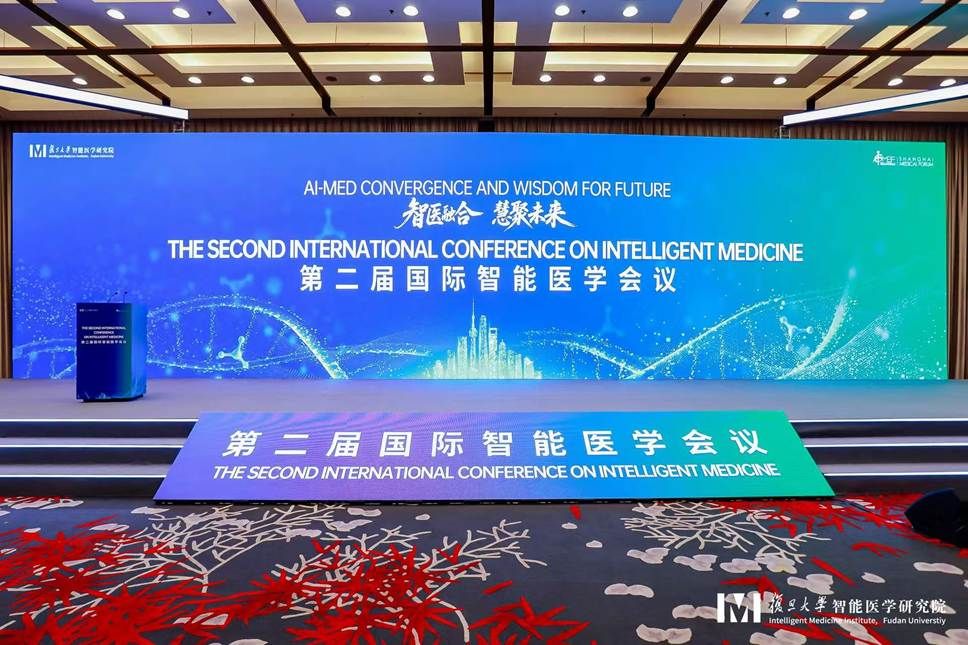
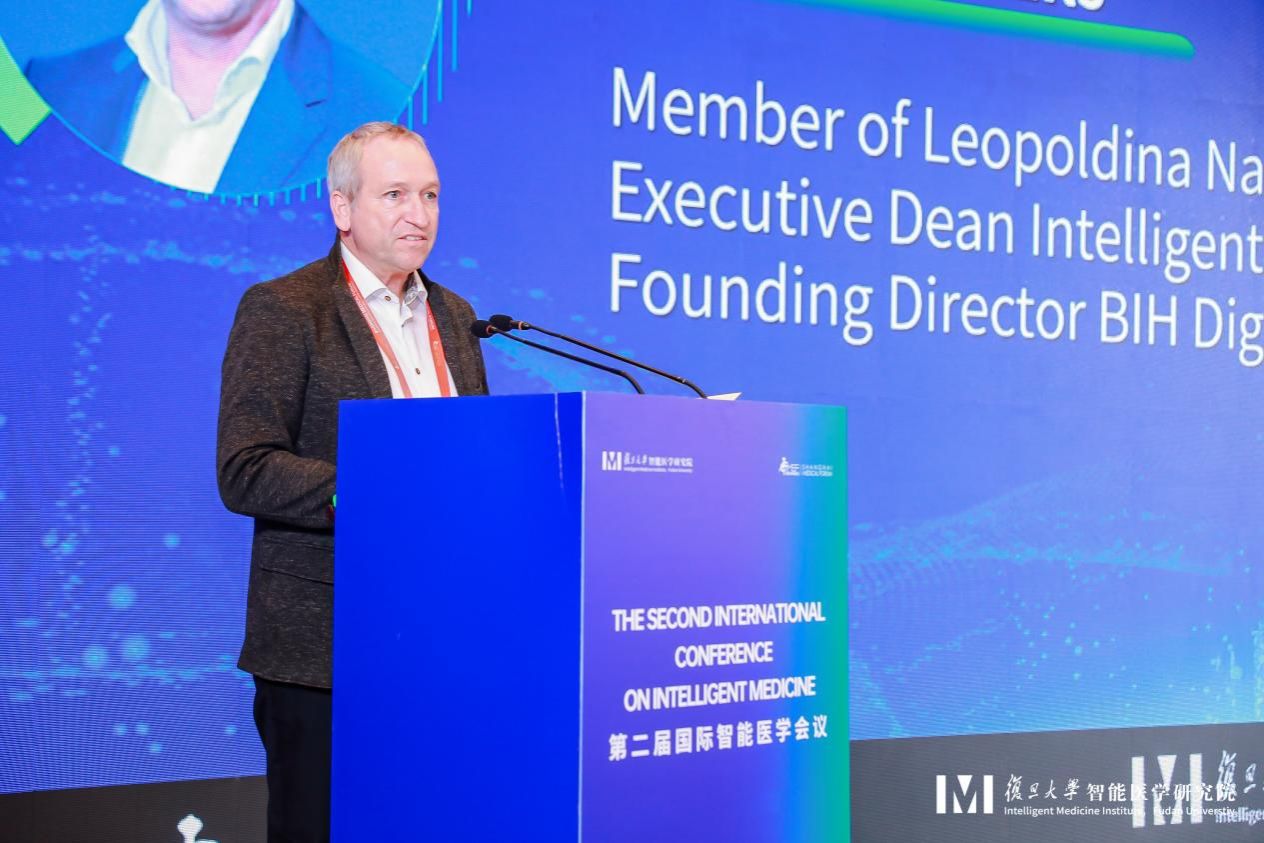
Professor Poo Muming, Academician of the Chinese Academy of Sciences (CAS) and Academic Director of the CAS Center for Excellence in Brain Science and Intelligence Technology, delivered a wonderful opening keynote titled "Mesoscopic Mapping of the Primate Brain." Academician Pu introduced his team's latest achievements in macaque brain research: identifying about 200 brain cell types and their distributions using single-cell and spatial transcriptomics technologies; discovering through gene regulation sequencing that different cells have their own specific regulatory elements, and genetic variations related to mental disorders more frequently appear in primate-specific regulatory regions; completing whole-brain single-cell level axon reconstruction, revealing the macaque brain's characteristic of "few targets, long-distance" directed connectivity, and further elucidating the claustrum's and functional division. Finally, Academician Pu proposed a disease phenotype-oriented monkey model, which aids in target discovery and precise disease intervention.
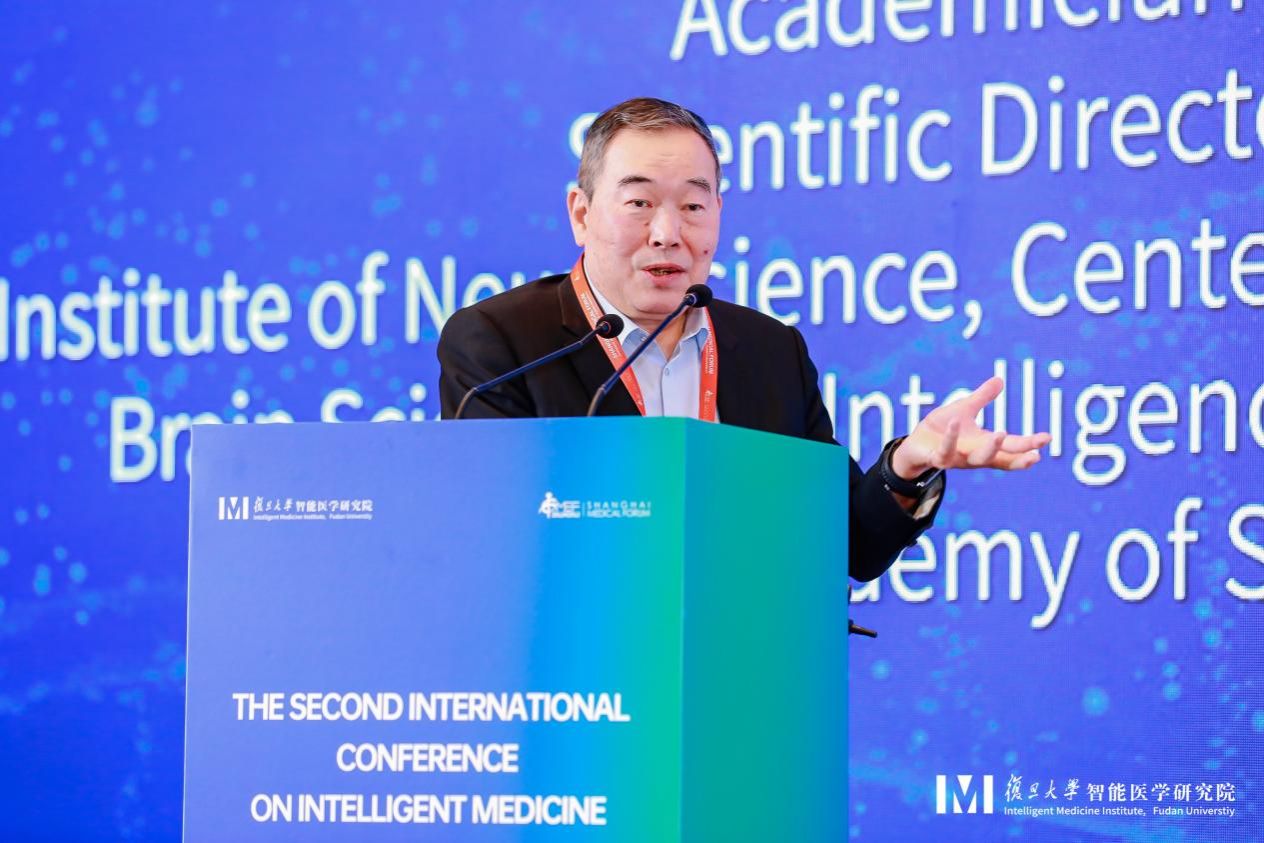
Professor Shaun J. Grannis from the Indiana University School of Medicine presented on "Using Emerging AI Techniques for Real-world Healthcare Applications: Successes and Future Strategy," showcasing population health AI applications supported by Health Information Exchange (HIE). He reviewed data-driven emergency department syndromic surveillance and prediction of frequent healthcare users, demonstrating the value of cross-institutional data. He highlighted a case using fine-tuned small LLMs on HL7 messages for automatic identification of notifiable diseases, finding that ensemble models and specific prompts significantly improved accuracy. He also discussed using LLMs to identify home-based COVID-19 positivity from clinical text and building a Social Determinants of Health (SDOH) referral tool to reduce ED visits. Prof. Grannis emphasized that AI aims to augment, not replace, clinicians, and "human-in-the-loop" remains crucial.
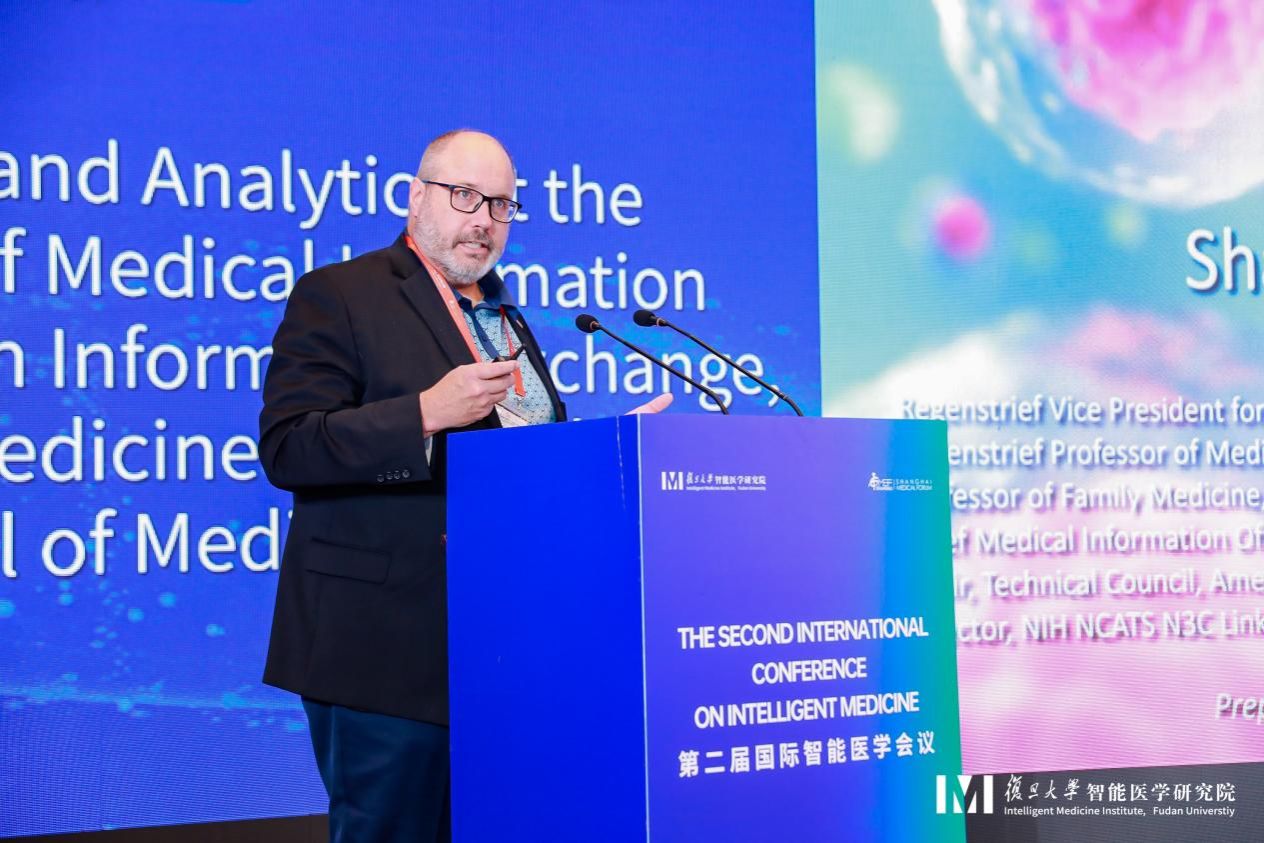
Professor Matthias Gröschel from Charité – Berlin University Medicine gave a presentation on "Generative AI for guideline adherence in pulmonary medicine: a pragmatic clinical trial," sharing his team's latest results in clinical AI implementation: By structuring clinical guidelines and integrating a Retrieval-Augmented Generation (RAG)-based intelligent assistant, a prospective controlled trial demonstrated a significant reduction in hospitalization rates, with approximately 80% of cases optimizing treatment based on AI feedback, and related diagnostic task accuracy stabilized around 80%. The project has established issue reporting and traceability mechanisms, continuously correcting label and reasoning inconsistencies. The next phase will advance according to medical device compliance requirements, strengthening chart understanding and patient compliance management, and conducting multinational randomized, one-year follow-up validation in cardiovascular, asthma, and critical care fields. Matthias stated the project will adhere to real-world implementation, detail-orientation, and continuous evaluation to ensure AI tools are truly usable, trustworthy, and manageable.
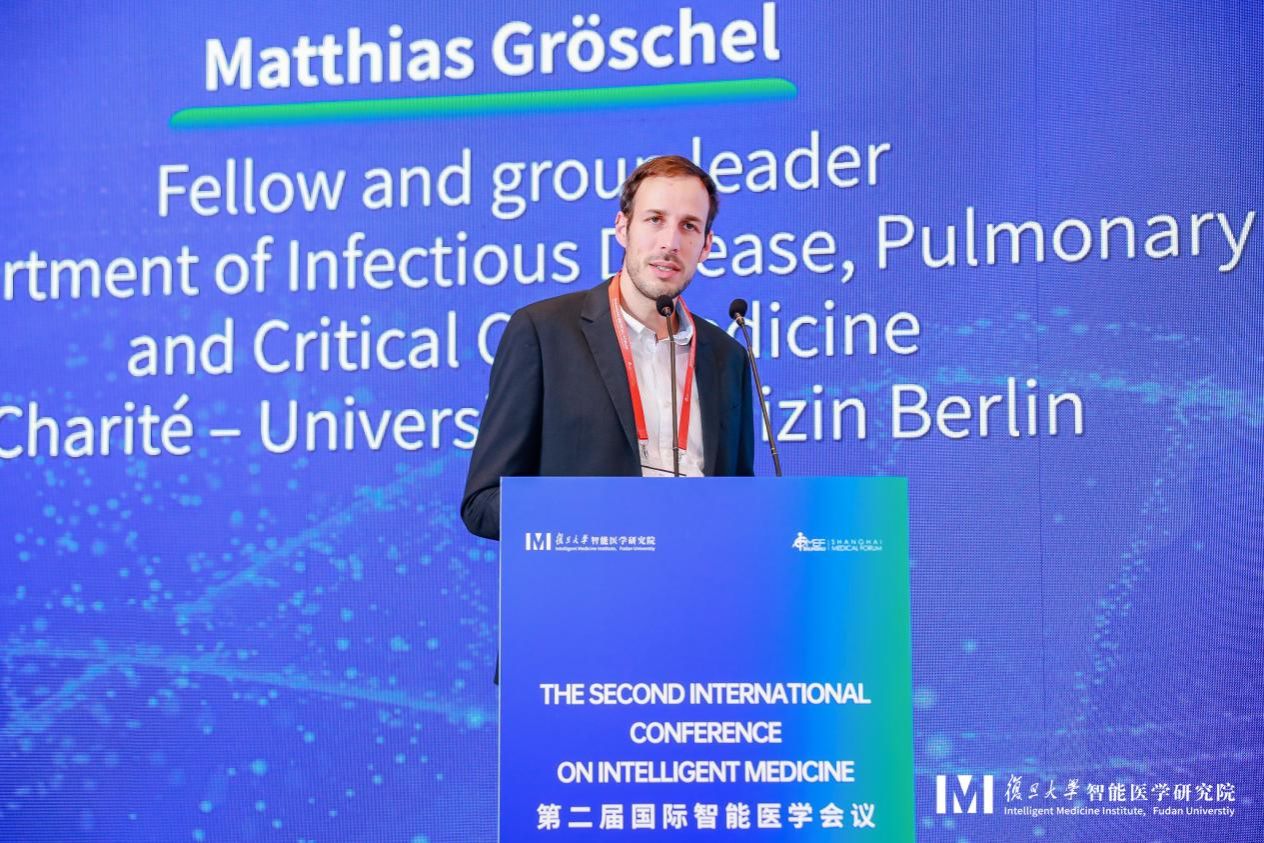
Professor Mingguang He, Chair Professor of Experimental Ophthalmology at The Hong Kong Polytechnic University, presented on "Generative AI in ophthalmology: from algorithm to solutions," showcasing his team's breakthrough in "image-to-image" translation of ophthalmic images. The research uses generative networks to non-invasively "translate" color fundus photos into fluorescein angiography-like images, showing high consistency with real angiography in leakage location and morphology in external validation. The team further extended this to multimodal generation like ICG and video-level output, combined with pixel-level registration and segmentation, enabling visualization and real-time segmentation of microvessels difficult to annotate manually, significantly enhancing the identification and prediction ability for complex lesions. He pointed out that this method holds promise for providing near-angiography level information without the need for contrast injection, reducing allergy risks and examination costs, and improving accessibility and scalability at the primary care level. The team will continue to advance external validation and productization translation towards more stable and scalable real-world applications.

Professor Kun Huang from the Department of Biostatistics at Indiana University presented on "Translational Bioinformatics and AI for Alzheimer's Disease Drug Discovery," sharing his team's phased results in Alzheimer's Disease (AD) research: Since 2017, using public data to construct gene co-expression networks, discovering and validating the key role of immune/microglial signaling in AD, emphasizing innate immunity and inflammatory pathways as priority intervention directions. The team integrated multi-modal open data from ADRC, ADNI, etc., collaborated with MIT on joint training of bulk and single-cell data for disease knowledge transfer, used graph learning multi-omics algorithms for population stratification and biomarker mining, and employed "trajectory/pseudotime" methods to characterize heterogeneous disease courses. In platform construction, they secured two consecutive rounds of major funding, laid out preclinical and model editing centers, and advanced real-world data standardization (CDE) with international partners. For translation, the team will use generative AI and specialized models to accelerate the journey from algorithms to solutions, serving precise diagnosis and drug development.
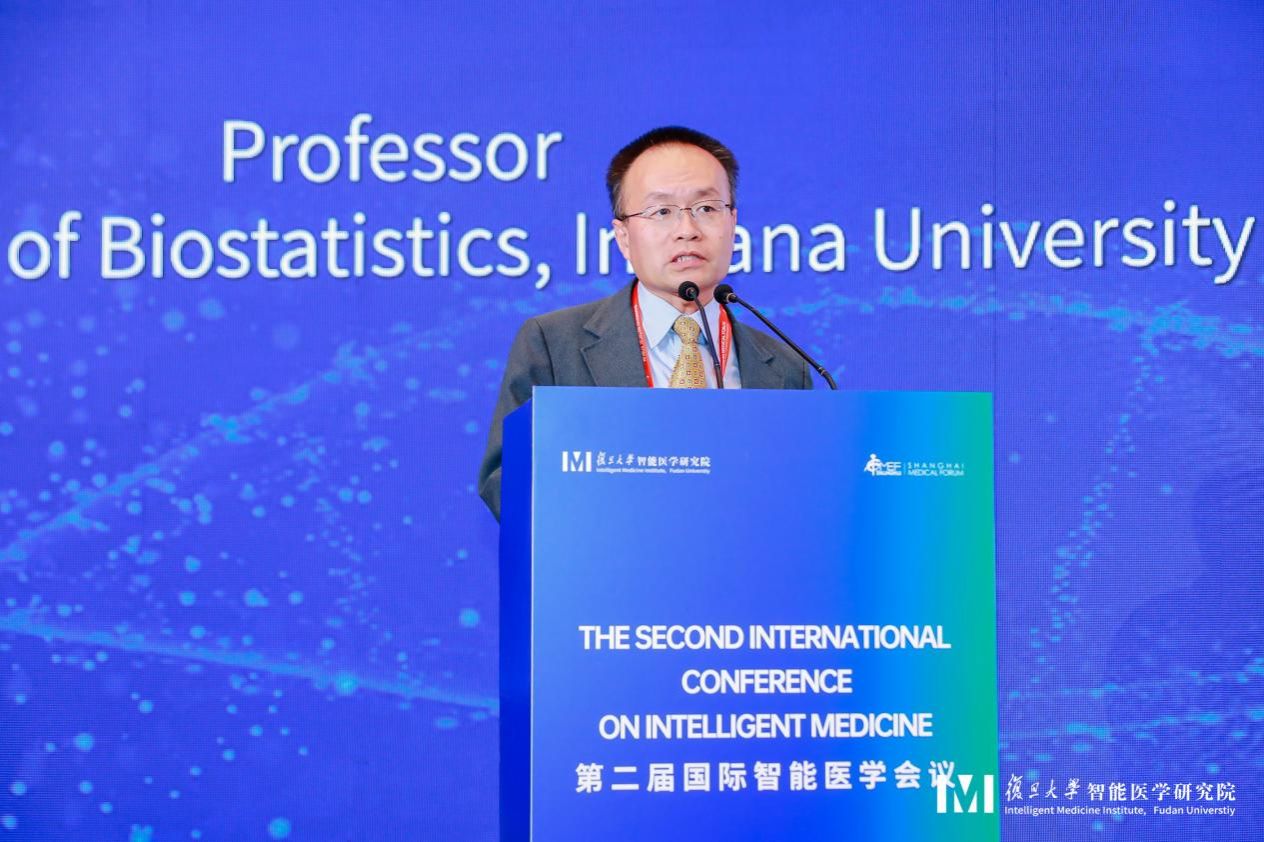
Dr. Da Qian, Deputy Chief Physician and Assistant Director of the Pathology Department at Ruijin Hospital Affiliated with Shanghai Jiao Tong University School of Medicine, gave a thematic report on "Opportunities and Challenges of Pathology AI in the Era of Foundation Models." She introduced that, addressing pain points like physician shortages, uneven resources, and limitations of traditional workflows, the hospital is promoting a "comprehensive digital health transformation" under government and multi-stakeholder collaboration. Based on systematic planning, digital infrastructure, and data integration as the foundation, they completed end-to-end process re-engineering, building an intelligent digital pathology department and an AI diagnostic platform organized by disease. Relying on over a million training slides and a "Regional Partner Co-construction" plan to solidify the data foundation, Ruijin Hospital's next step is to create a replicable "next-generation pathology department," promoting foundation models in adult and pediatric subspecialties to enhance diagnostic efficiency and precision, and promote broad accessibility of precision medicine.
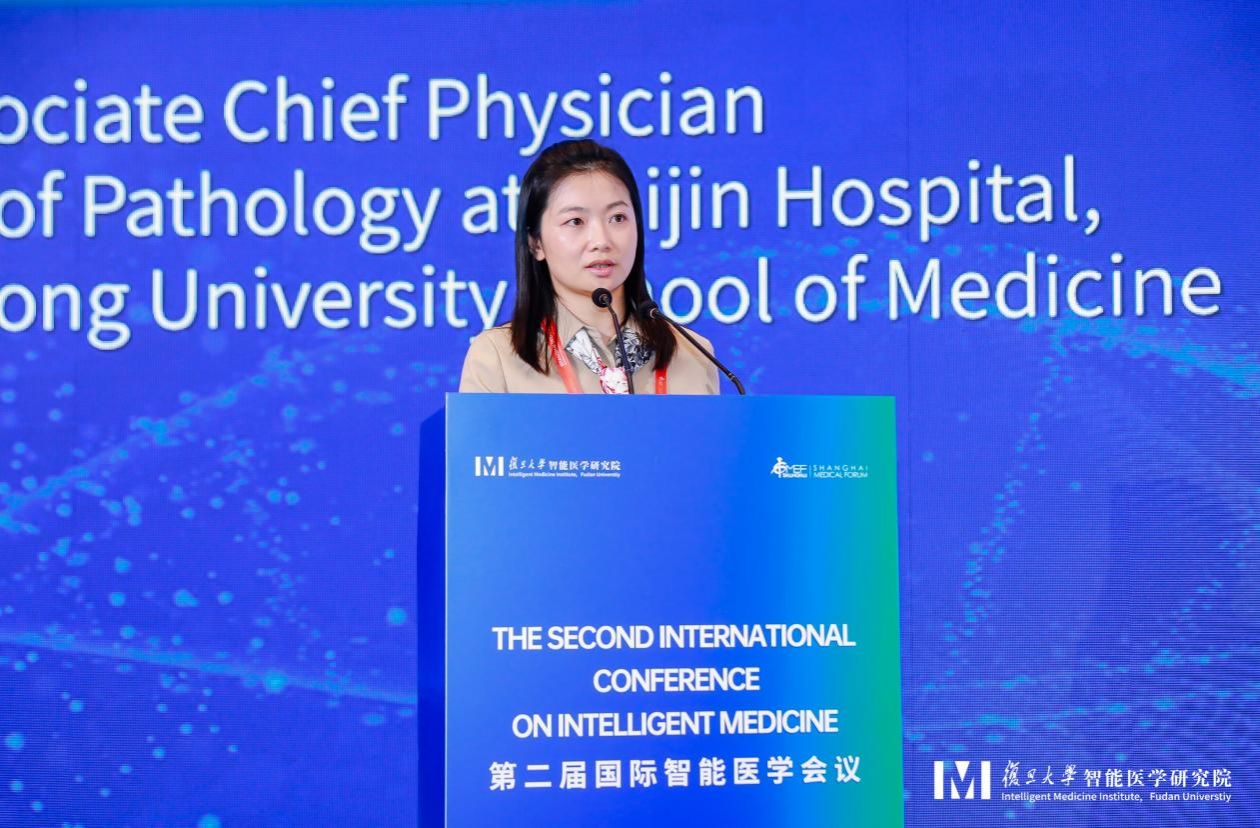
On October 20, the 2nd International Conference on Intelligent Medicine continued, first chaired by Professor Irina Lehmann, Professor at the Fudan University Institute of Intelligent Medicine and Full Professor of Epidemiology and Lung Research at the Berlin Institute of Health at Charité.
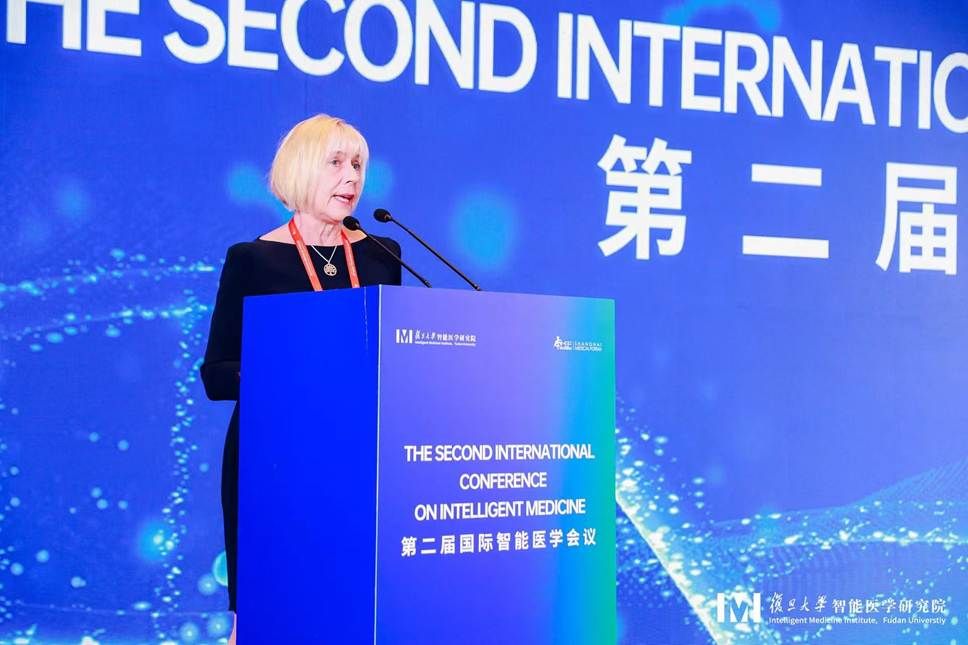
First, Professor Benjamin Becker from the Department of Psychology at The University of Hong Kong presented on "AI, neuroscience and mental health: AI-inspired brain-based decoding and regulation of emotion." He introduced his team's work using AI and fMRI to decode an individual's current emotional state, establishing precise biomarkers, and using the decoded results for drug and intervention evaluation. In movie paradigms closer to real situations, oxytocin selectively reduced the neural signature of "social contextual fear" and showed positive signals in trials with autistic children. The research also revealed its reliance on the 5-HT pathway, limitations due to gender differences and short-term tolerance. The team then systematically characterized central receptors, combined with receptor maps and the "target engagement" of the accessible drug Candesartan in human models, finding it enhanced fear extinction and promoted reward-oriented flexible learning, now being combined with exposure therapy for clinical translation. Prof. Becker emphasized that the interactivity of AI is directly engaging the human "social brain," bringing new opportunities for psychotherapy and cognitive restructuring, while also amplifying risks like telecom fraud and deepfakes. He called for parallel efforts in technology and public education, developing explainable, testable neurobiological biomarkers and individualized intervention paths.
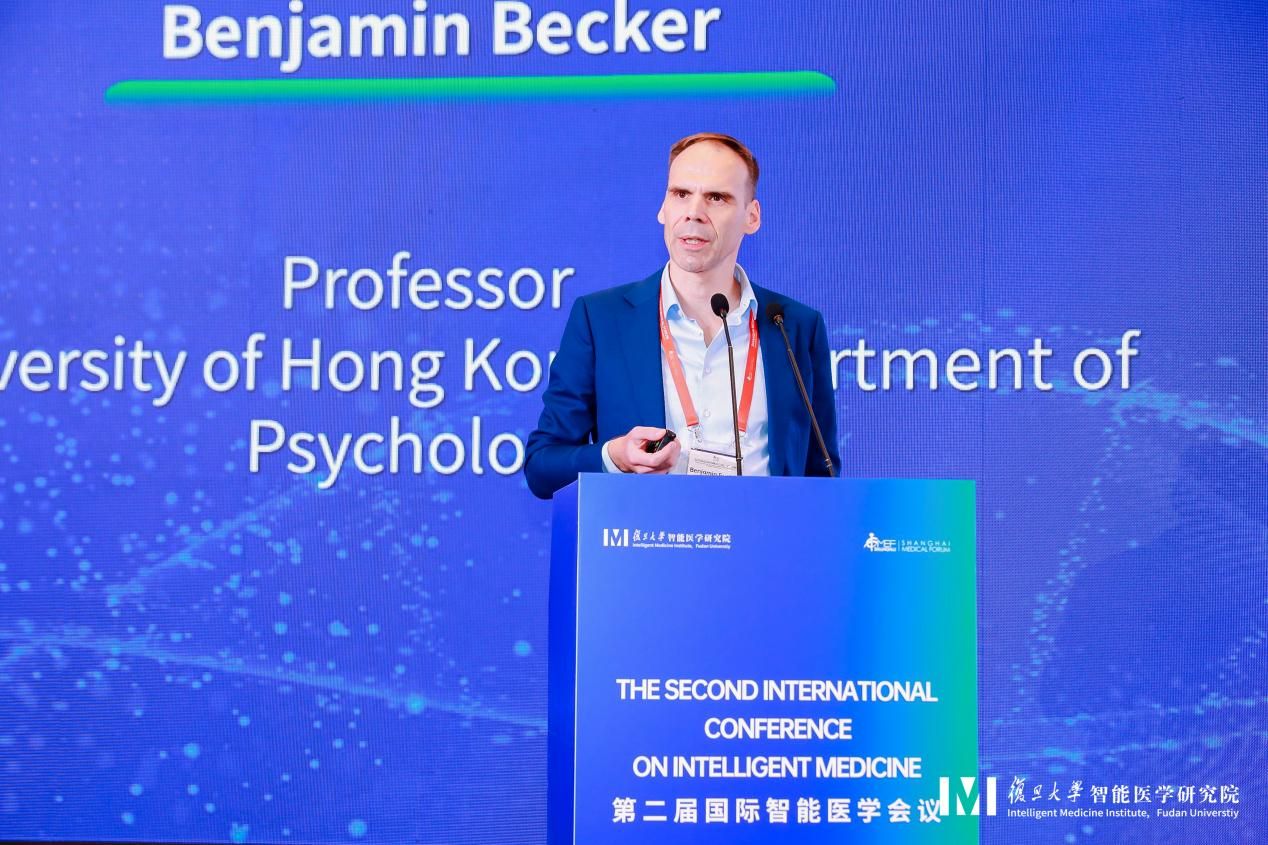
Professor Gao Juntao, Associate Researcher at the Tsinghua University Center for Synthetic and Systems Biology, delivered a keynote titled "Intelligent imaging based single-cell multi-omics and its application in medicine." Prof. Gao reviewed the evolution of his team's work from early quantitative localization studies to current AI-driven imagingomics. Starting from discovering key genes exhibiting non-random spatial preferences within the nucleus, and riding the waves of multi-omics and super-resolution imaging, they independently built platforms and innovated short probe technology, reducing traditional ~100 kb probes to about 2 kb or even smaller for precise labeling of promoters/enhancers and loop anchors, tracking differentiation and phase separation processes, and long non-coding RNA interactions. At the tissue scale, the team conducted multiple rounds of RNA in situ imaging and multi-photon microscopy, developing algorithms like oriented dipole super-resolution, frequency-domain "multi-voice" filtering, etc., to automatically extract valid signals from high-noise backgrounds. In AI, they established the first FISH image database covering over 7,000 species and 10,000+ images, expanding through hospital collaboration, developed semi-supervised signal recognition and image enhancement methods, promoting automated interpretation of literature images and clinical data and new hypothesis generation. Looking ahead seven years, Prof. Gao stated they would use "metaverse-style" imaging and AI/machine learning as a platform, advance methods for epigenomics and immune-metabolic imaging, build a national biological structure big database and AI public service platform, and deepen the clinical and mechanistic applications of intelligent imaging and multi-omics.
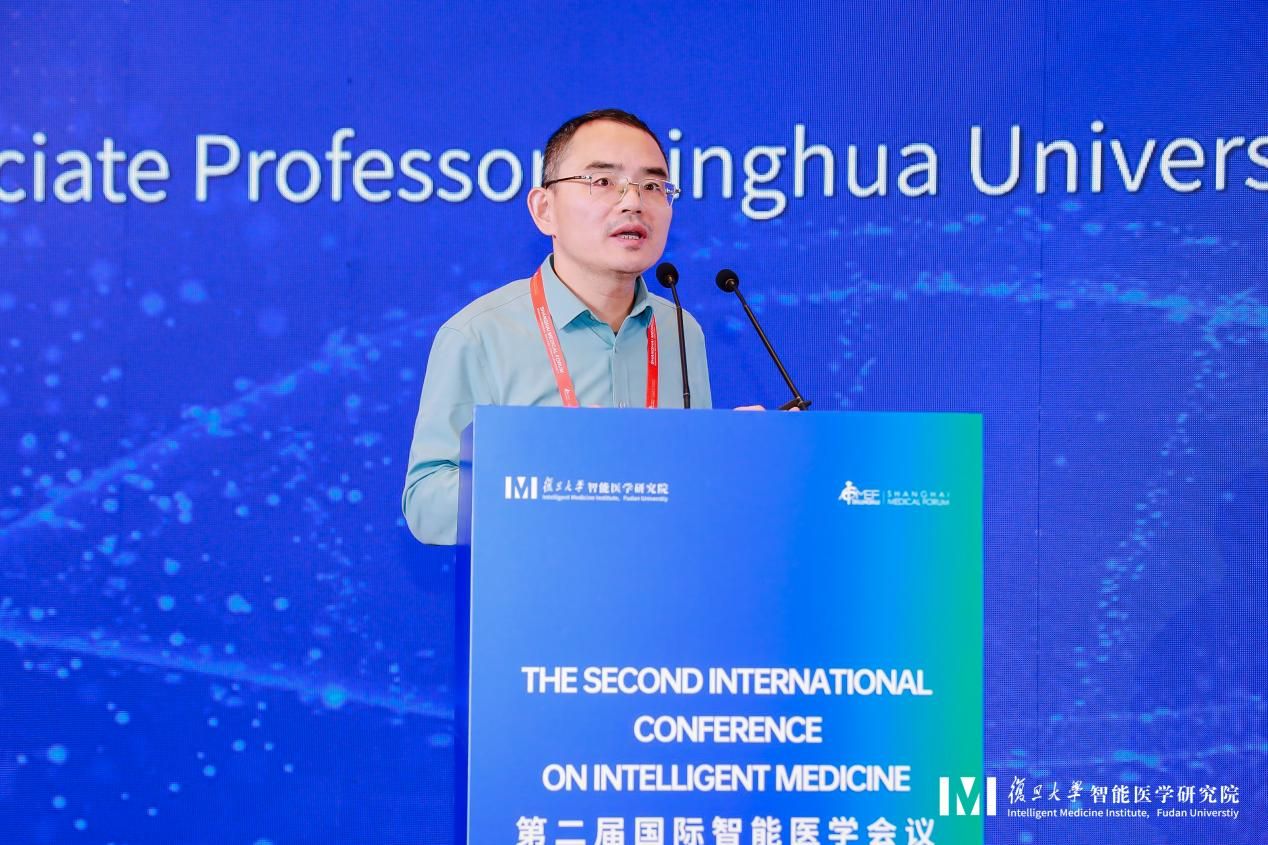
Professor Lyu Hui, Distinguished Professor and Head of the Department of Bioinformatics and Biostatistics at Shanghai Jiao Tong University, delivered a presentation on "Efficient and Fair AI models in Biomedical Applications." Prof. Lyu introduced her team's progress around "platform-based multi-omics, AI fairness, and agent automation." To integrate the massive number of bioinformatics tools, they built an editable, acceleratable workflow platform, already covering about 40%–60% of tasks for high-impact paper charts and figures, and successfully ran replaceable pipelines from omics to clinical scenarios like tumor diagnosis and treatment reports and rare disease. The platform supports multimodal applications, including wearable physiology + imaging fusion, smartphone video screening for high-risk infant neurodevelopment, motion quantification, and "musculoskeletal digital human" unsupervised gait learning verification. The team revealed AI medical biases towards common subtypes and lower accuracy for rare types, addressing this by borrowing information across types, literature-guided specialized generation, and explainability to improve performance. Facing the era of agents, the team launched an end-to-end data analysis agent that automatically completes the full process from problem posing to environment configuration and result interpretation, and introduced a "data agent—knowledge agent—referee agent" debate framework in rare disease diagnosis to improve accuracy. Prof. Lyu also called for continued advancement in multimodal fusion and agent-driven scientific productivity.
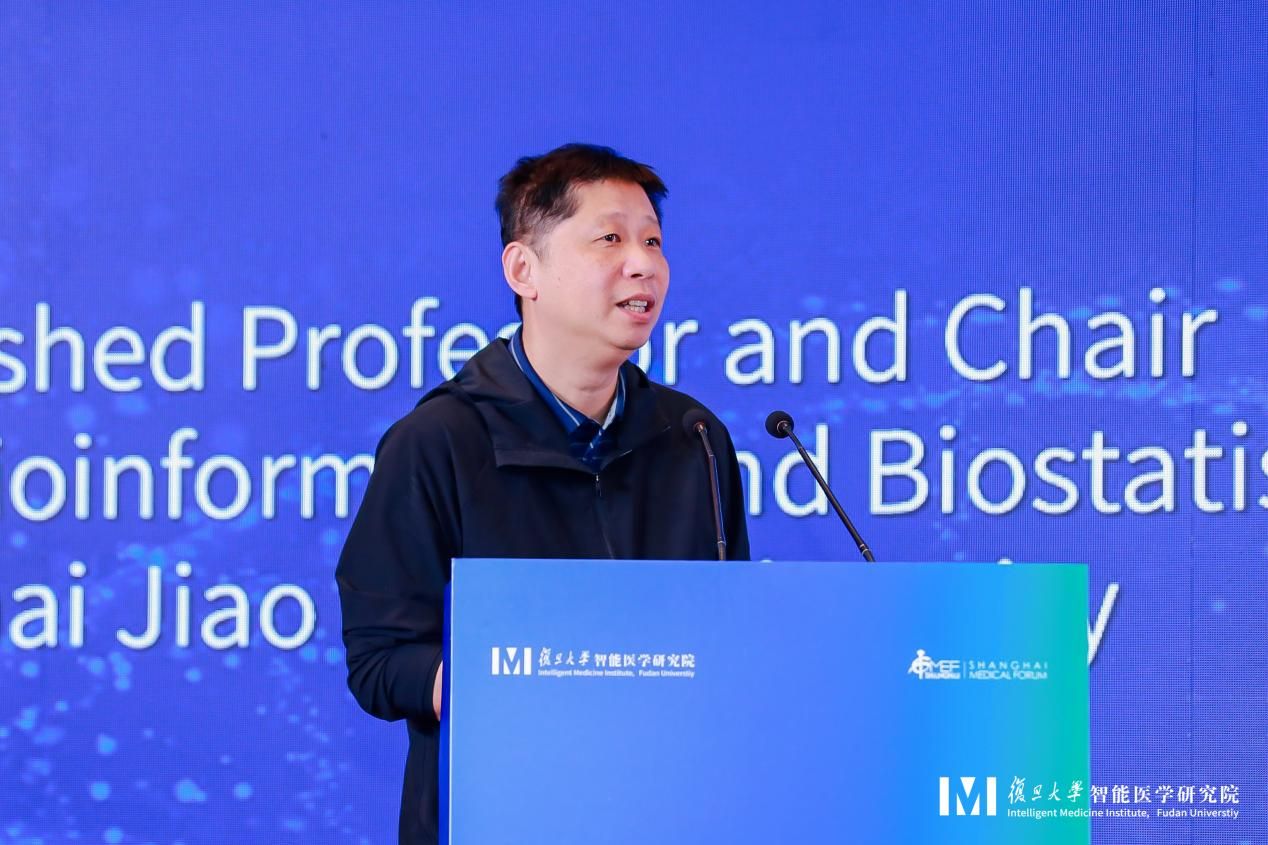
Mr. Liu Wei, Co-founder and CEO of BioMap, presented on "The Application of xTrimo Foundational Models in Medical Research," sharing his journey from venture capital to entrepreneurship and his vision. Recognizing the difficulties of traditional and "previous-generation AI" in handling complex design spaces like programmable multi-target proteins due to data scarcity and multi-objective optimization challenges, he co-founded Biomap. Over five years, they built a "biological language" foundation model system from the ground up, trained on trillions of multi-source biological data points and over 10,000 GPUs, iterating to a third-generation model with about 300 billion parameters, and moving towards a fourth-generation "life simulator" capable of cross-modal rendering and automated design simulation. To address the validation bottleneck of generative models, the company built over 6,000 square meters of experimental facilities in Suzhou, Beijing, and Silicon Valley, forming a "training—generation—experimental validation—feedback retraining" data closed loop, allowing incremental knowledge from task-specific models to continuously to the base model. This series of works helps promote a paradigm shift in AI for drug discovery, cell function, and synthetic biology from "trial-and-error screening" to "generative prediction."
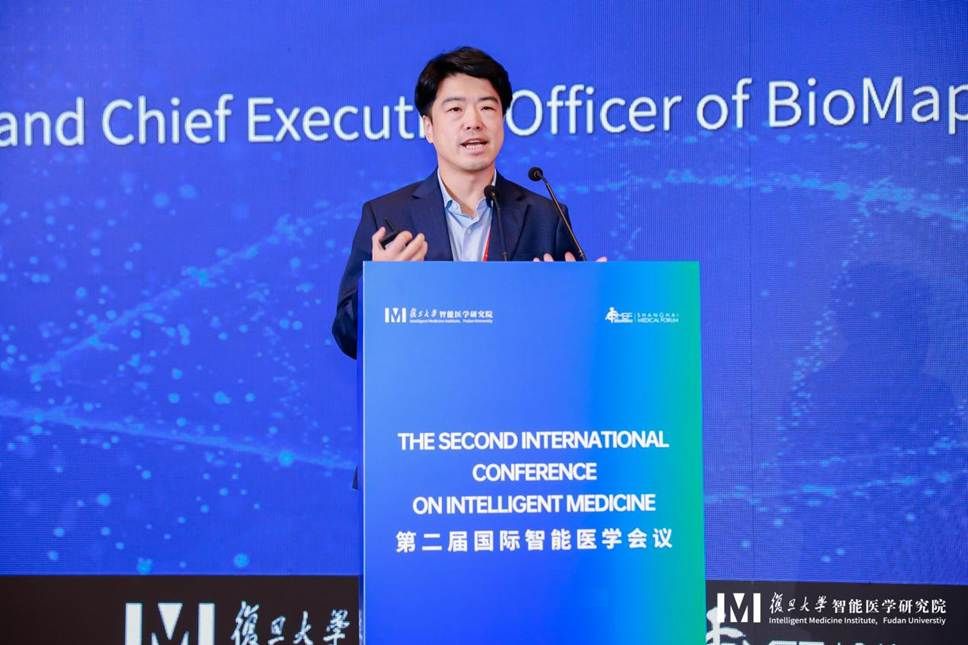
During the morning tea break, invited special guests Academician Yang Huanming of the Chinese Academy of Sciences and Academician Roland Eils of the German National Academy of Sciences engaged in a lively discussion about the conference. The session was chaired by Professor Gu Lei, Independent Group Leader at the Max Planck Institute for Heart and Lung Research.

First, Professor Liu Yaping, Assistant Professor at Northwestern University, shared insights on "Decoding the human genome by multi-omics in cell-free DNA and single-cells." Prof. Liu systematically reviewed his team's latest progress in single-cell multimodal atlases and circulating cell-free DNA (cfDNA) analysis. He noted that with improving resources, functional interpretation of non-coding regulatory elements requires cross-omics integration and single-cell resolution support. At both population and single-cell levels, the team also advanced computational pipelines for genetic variant identification. Addressing the challenge of longitudinal monitoring of human development and disease, the team turned to cfDNA, utilizing its fragmentation "footprints" related to chromatin accessibility to reconstruct tissue of origin, and discovered tissue-specific and disease-related "hotspot" changes in healthy individuals and early prostate cancer samples, showing potential for early detection. To tackle data acquisition and computational performance bottlenecks, the team publicly released repeatedly processed data in standard formats and built high-performance analysis tools, maximizing information from low-coverage short reads, combining simple features with CNN modeling to achieve cell type deconvolution, open chromatin indication, and multi-disease scenario assessment, with speed increased by about 50 times compared to similar implementations. Related methods are expanding from cancer to other diseases, with plans for larger-scale deployment in Southeast Asia. Concluding his talk, Prof. Liu indicated that future work will continue optimizing single-cell multimodal integration and cfDNA diagnostic models, accelerating translation from research findings to clinical applications.
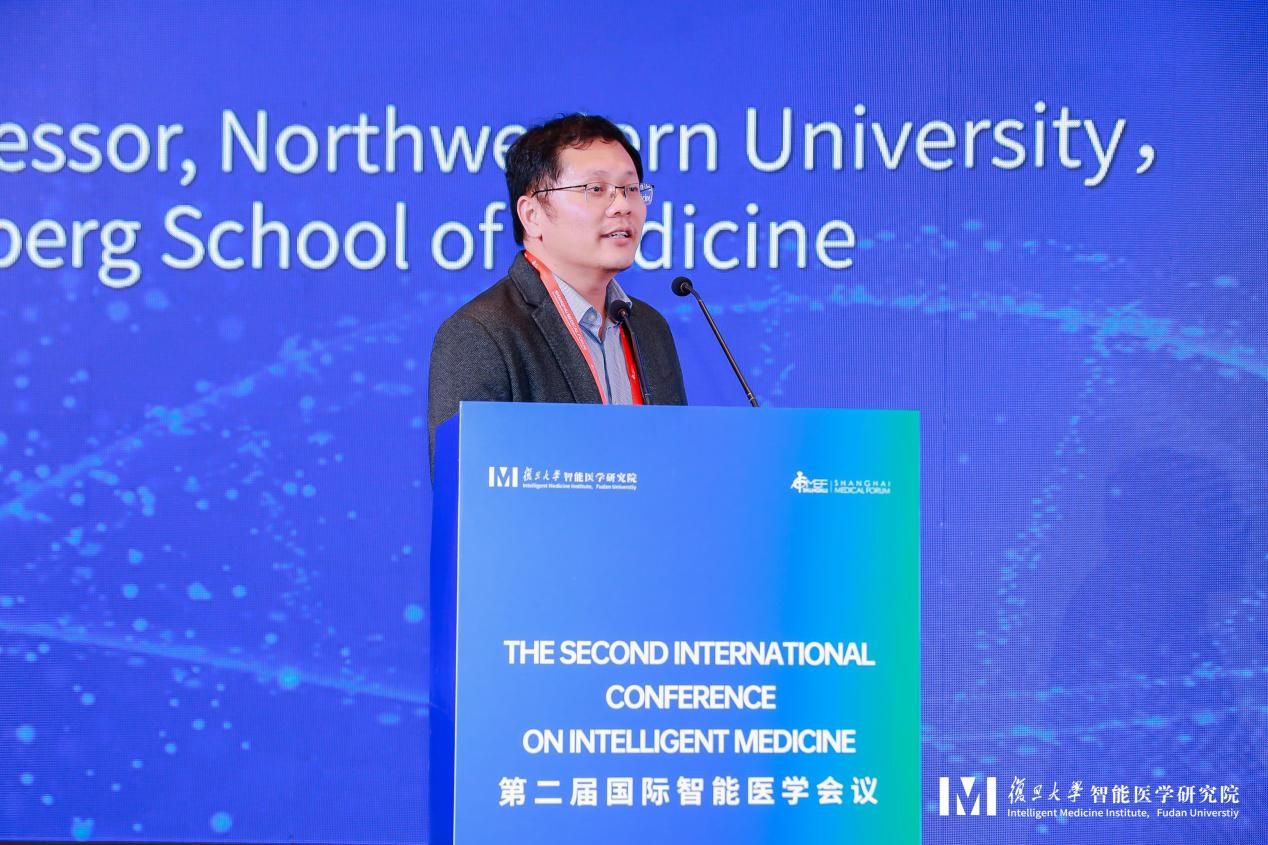
Professor Christian Conrad from the Berlin Institute of Health at Charité presented on "Plasticity and transcriptional cell subtypes of the human pancreas across development and disease," introducing his team's interim achievements. By improving sampling and multimodal integration, they filled gaps in exocrine tissue data, proposed two new centroacinar-associated cell populations (plastic and epigenetic), identified suspected acinar progenitor cells, and observed dispersed endocrine cells outside islets. In Pancreatic Ductal Adenocarcinoma (PDAC), the team refined the spatial heterogeneity and invasion features of classical and basal-like subtypes, proposed new functional annotations, and cross-validated with morphological deep features and molecular subtyping. Finally, the report mentioned that the related "anchor atlas" resource will be released in batches, covering over 4 million cells. This research is expected to advance the precise characterization and clinical translation of pancreatic development and tumor research.
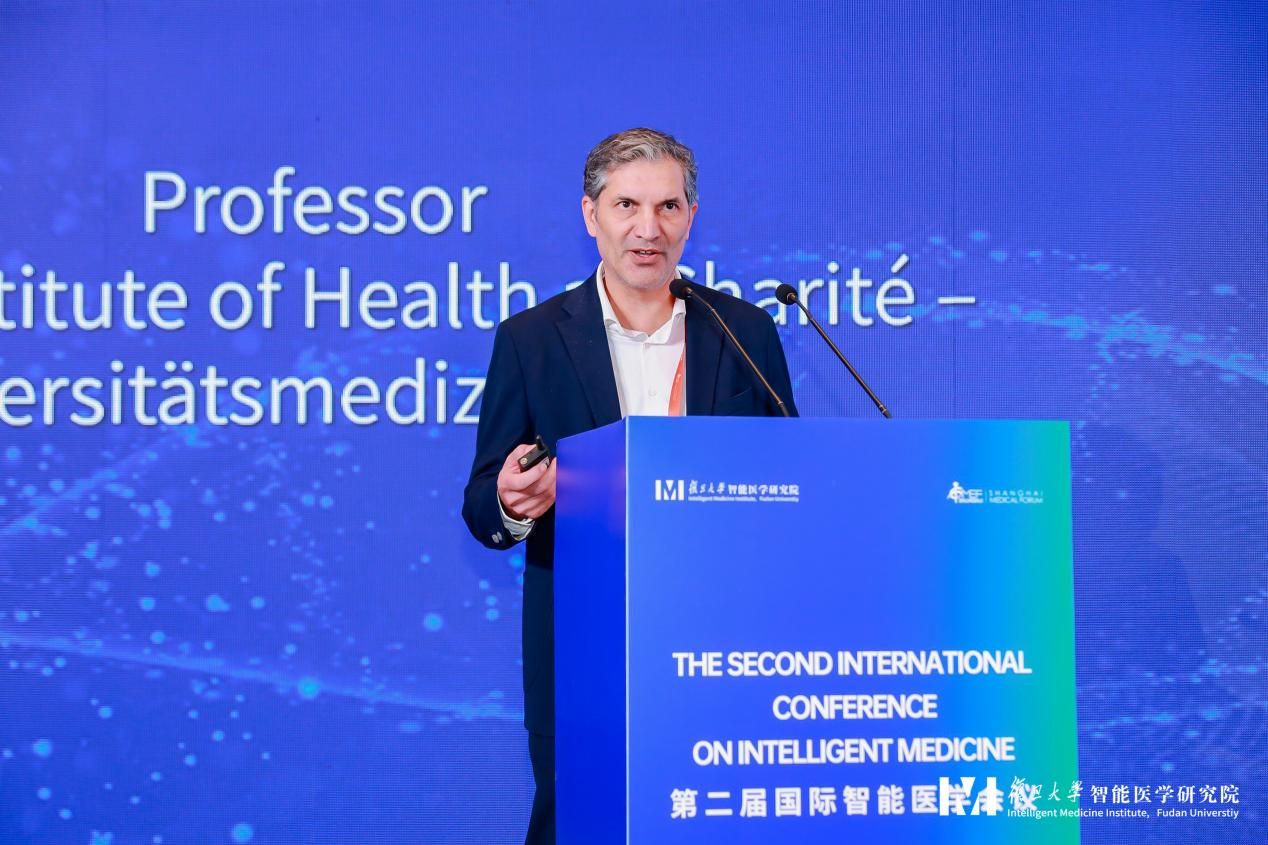
Dr. Chen Hao, Bioinformation R&D Director at Shanghai Omic Empower Co., Ltd., presented on "AI-assisted gadgets in biomedical researches," introducing a suite of AI "gadgets" for the entire research workflow, aimed at reducing tedious and repetitive labor in research and accelerating progress. The tools cover three stages: In the preliminary stage, a "Literature Assistant" automatically searches authoritative databases, generates weekly field summaries, and pushes important news. In the study design stage, it provides multi-omics experiment planning and a "starter guide," offering actionable advice from read length/depth, slicing and sample logistics, to feasibility and novelty assessment, based on historical project experience. In the implementation and analysis stage, they offer high-throughput cell segmentation and cross-species/tissue cell type annotation (incorporating spatial context), and provide an "In-lab AI Interpreter" to explain results on demand, extract key signals and pathways.
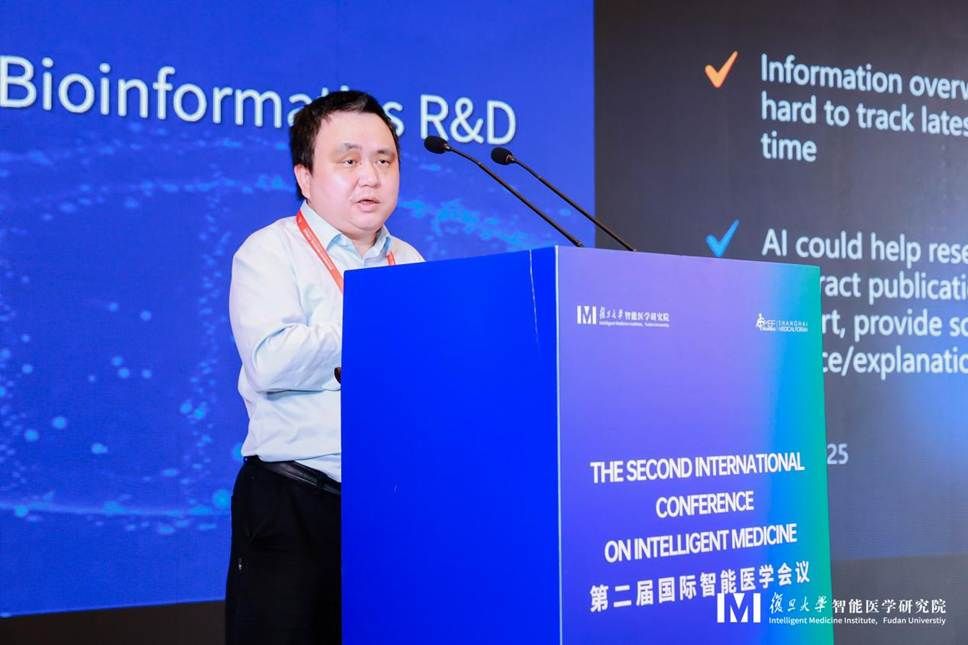
Professor Li Wei, Tenured Associate Professor at the Institute for Health Computing, University of Maryland School of Medicine, presented on "pertTF Models Single-Cell Genetic Perturbation Responses During Pancreatic Development and Type-2 Diabetes," introducing the use of Polygenic Risk Scores (PRS) to quantify gene perturbation effects and proposing a "3Ps" prediction framework. This framework overcomes traditional limitations by simultaneously predicting changes in gene expression, cell spatial location, and differentiation trajectory, possessing transfer and generalization capabilities across datasets and cell types. The model incorporates a neighborhood "context matching score" and is being used for "virtual CRISPR screening" to prioritize targets before high-cost experiments, aiding more efficient functional gene discovery and disease mechanism research. This series of works provides scalable tools for precisely predicting spatiotemporal cellular responses to genetic and chemical perturbations, accelerating functional gene discovery and disease mechanism research.

In the afternoon, the session continued under the chairmanship of Professor Irina Lehmann. First, Professor Saskia Trump, Associate Professor at the Berlin Institute of Health at Charité, delivered a presentation on "Decoding Transcriptional Programs: Stratifying Patients and Predicting Response Across Cancers." Prof. Trump shared that the small molecule Aryl Hydrocarbon Receptor (AHR) is activated by various metabolites and its effects are highly context-dependent. It can suppress anti-tumor immunity and promote progression in cancer, yet also exhibits tumor-suppressive effects in some contexts. To address this, she introduced her team's construction of an AHR activation "transcriptional signature" covering 156 genes. Large-scale analysis in TCGA across 32 cancer types and experimental validation found that IL4I1, which degrades tryptophan and produces active ligands, had the strongest association with AHR activity. IL4I1 promotes AHR nuclear translocation, enhances tumor cell migration, and inhibits T-cell proliferation, with high expression correlating with worse survival. Simultaneously, immune checkpoint therapies like PD-1 induce both IDO1 and IL4I1, and clinically relevant doses of IDO1 inhibitors fail to suppress IL4I1, suggesting it becomes a key compensatory pathway when IDO1 is inhibited. The research suggests using the AHR signature to depict a tumor's "AHR activation fingerprint" for patient stratification and treatment response monitoring. For patients with high AHR activation, caution is advised with immunotherapy alone, prioritizing combination with AHR/IL4I1 targeting strategies or directly developing IL4I1 inhibitors, aiming to improve personalized immunotherapy outcomes.
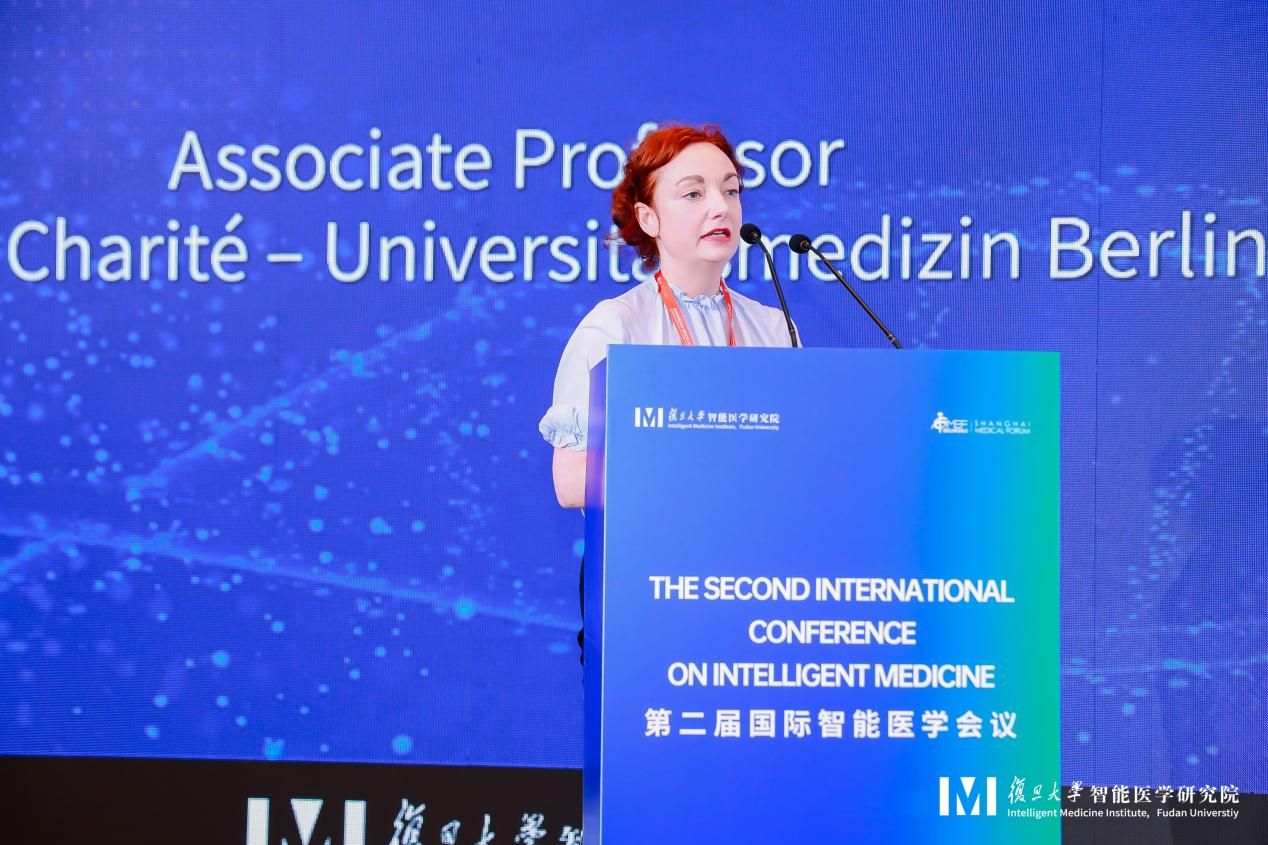
Professor Gu Lei, Group Leader at the Max Planck Institute for Heart and Lung Research, presented his work on "Histone modification Clocks for Biological Age Prediction and Elucidating Senescence Regulation." The team constructed an epigenetic clock based on histone modifications as an alternative to traditional DNA methylation-based methods, hoping for broader species applicability and higher noise resistance/stability. The team aggregated multi-cohort, multi-tissue data, focusing on key marks like H3K27ac in blood, establishing an age prediction model comparable to mainstream methylation clocks and more stable under technical noise. Analysis revealed aging involves non-linear phase transitions (a transition around 40-60 years) and a "super-enhancer reorganization" phenomenon, suggesting regulatory structures gradually become disordered with age. The study also observed "age acceleration" in disease states and reversible signs with drug interventions, and linked clock features to aging phenotype changes through interventions targeting specific sites and downstream genes, supporting its biological significance. This clock has been validated in fruit flies for cross-species usability, showing potential for basic research and clinical translation.
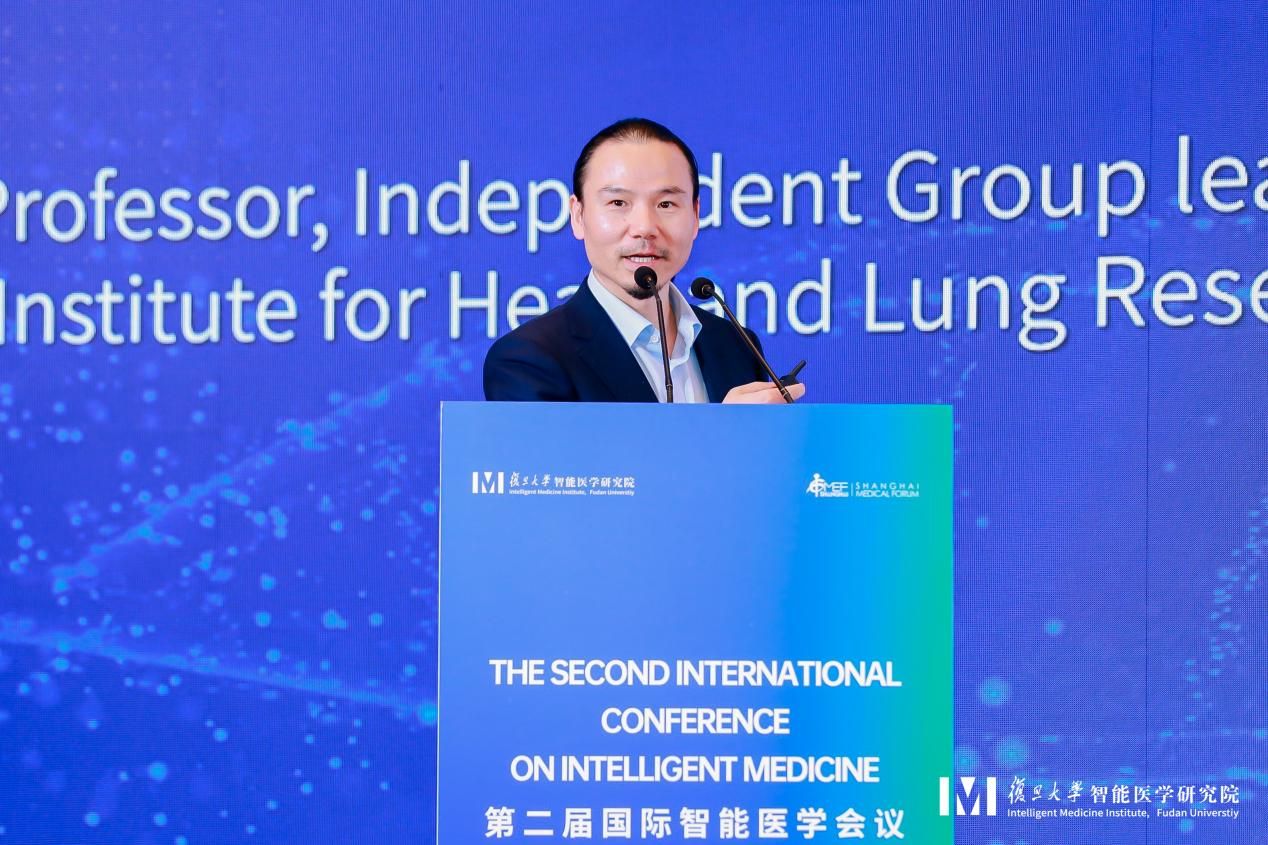
Professor Liu Lei, Executive Vice Dean of the Fudan University Institute of Intelligent Medicine, gave an introduction on "Development and Exploration of Clinical Application of the LLM-powered Rare Diseases Screening System: Based on Fine-Tuned Large Language Models (LLMs) and Retrieval-Augmented Generation (RAG)." Prof. Liu introduced his team's LLM-powered rare disease screening system "Rare Disease Signals," designed to alleviate pain points like long diagnostic cycles, high misdiagnosis rates, and fragmented knowledge for rare diseases. The project is based on an open-source model of about 14 billion parameters, enhanced for medical text understanding, clinical reasoning, and multi-source knowledge integration. It constructs an end-to-end process of retrieval-clarification-evidence chain-reasoning-reporting, supporting online triage, batch retrospective screening, and physician-side knowledge Q&A, deployable locally and integrable with hospital information systems. Using Human Phenotype Ontology (HPO) and disease knowledge bases as the core, combined with semantic slicing and entity recognition, the system structures patient complaints and provides Top 5 candidate rare diseases, subsequent test recommendations, and traceable evidence. In pilots involving thousands of cases and real clinical scenarios, Top-1/Top-5 accuracy performed well, with higher precision for some disease subsets, and outperformed non-specialized general models and some competitors. Currently, the system is being trialed in several hospitals and on doctor platforms, aiming to improve early screening and triage efficiency for rare diseases and shorten patients' "diagnostic odyssey."

Professor Sven Laudi, Associate Professor in the Department of Anesthesiology and Intensive Care Medicine at Leipzig University Hospital, presented on "Caveats in use of AI from a clinical perspective," highlighting key risks and bottom lines for clinical AI use from an evidence-based medicine standpoint. He disclosed that the multidisciplinary guideline his team participated in involved manually screening over 12,000 publications, formulating 97 recommendations supported by 621 systematic evidence statements, and emphasized that "Randomized Controlled Trials (RCTs) are the gold standard for treatment decisions." Through two cases of ARDS critical care ventilation, he pointed out that general AI gave recommendations contradicting high-quality evidence regarding PEEP settings, spontaneous breathing, and muscle relaxant use, and used phrases like "please double-check" to shift responsibility, highlighting the potential for AI reliance to mislead clinical practice. Laudi emphasized that physicians must simultaneously "know the patient, know the AI tool, know the evidence," maintaining safety boundaries amidst predictable AI errors and information uncertainty. Finally, Prof. Laudi stressed that if AI is to enter clinical treatment decision-making, RCTs need to be conducted on the AI tool or the strategy it drives, otherwise it's difficult to gain legitimacy and regulatory approval.
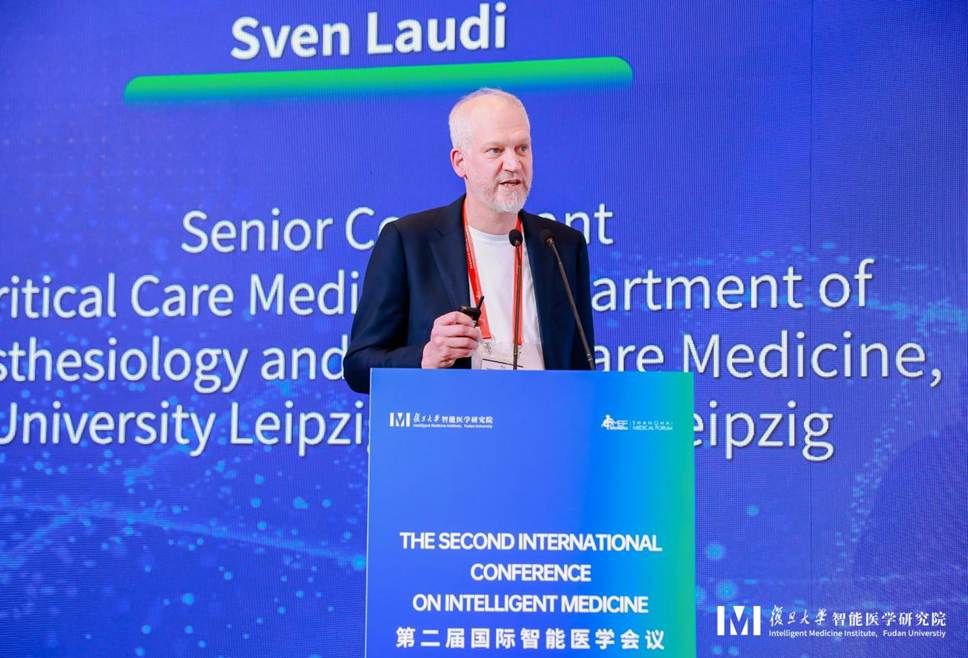
Xiangnan Liu, Head of Digital Innovation at Roche Pharma, delivered an insightful presentation titled "Empowering the Healthcare Eco-System for Patient-Centric AI Innovation." He highlighted that AI, big data, and IoT are driving a global transformation of healthcare towards greater efficiency and deep personalization. In China, factors like an aging population, uneven resource distribution, and talent shortages are accelerating the adoption of AI, with public hospitals transforming from "passive recipients" into "innovation engines." Citing market and data trends, he stated that by 2030, the AI in healthcare market could reach $188 billion, fueled by exploding healthcare data volume and high return on investment, which is pushing applications from pilot phases to scale. In China, the "AI+ National Action Plan" and multi-tiered capital investment are fostering joint R&D, smart hospital platforms, and consortium collaborations, spurring cutting-edge explorations like "AI Agent Hospitals" and demonstrating significant results in areas such as early cancer screening (e.g., improved sensitivity and efficiency in lung, gastric, pancreatic, and high-density breast cancer screening). He also directly addressed four key challenges: regulatory coordination, data governance and privacy, legal liability, and algorithm bias. To tackle these, he proposed large-scale multi-center validation, cross-sector collaboration, and explainable/transparent governance as key levers, emphasizing that "trust is the ultimate currency in healthcare." Mr. Liu shared Roche China's practices: advancing AI pilot projects and promotion focused on high-quality hospital development; co-creating and incubating healthcare AI agents with ecosystem partners; and participating in industry standards setting. Notably, the data management and AI quality standard DCMM-Flash Health was released in 2025, with upcoming standards for Healthcare Agents and GPU applications. Furthermore, Roche is collaborating with public hospitals to build data strategies, create standardized, high-quality datasets, and develop a patient-centric Agent ecosystem (spanning nursing, clinical, pharmaceutical, and patient sides). The goal is to significantly enhance accessibility and efficiency, reduce costs, and help forge a new, intelligent, efficient, and personalized paradigm for Chinese healthcare.
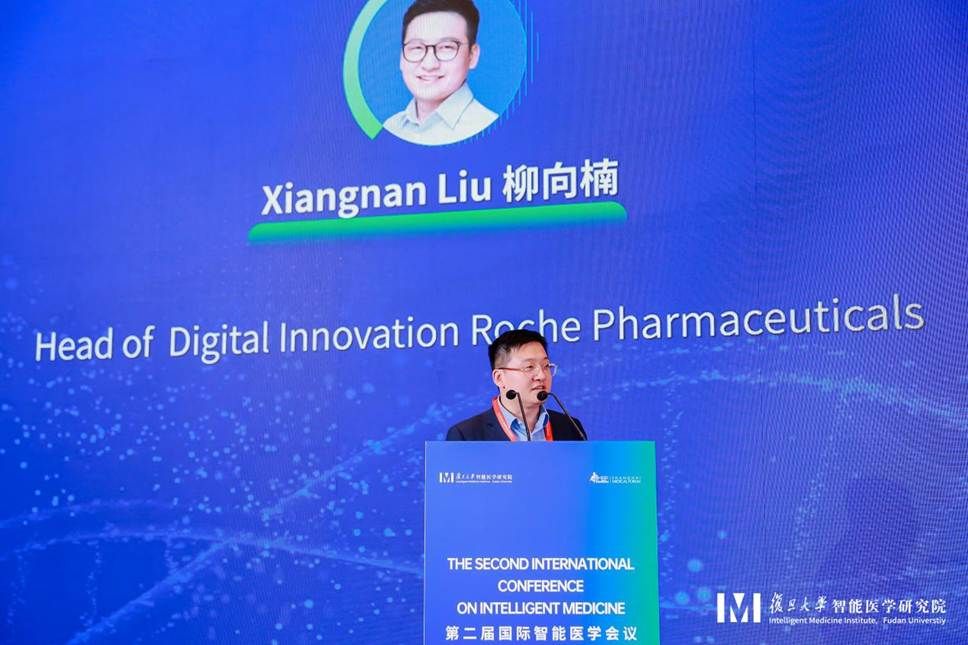
Professor Zhu Tongyu, Vice Dean of Shanghai Medical College, Fudan University, and Director of the Fudan University Institute of Intelligent Medicine, contributed a speech titled "Embrace AI - Accelerate the development of kidney transplantation." Dean Zhu pointed out that against the severe background of antibiotic resistance, phage therapy is becoming an important alternative path, increasingly integrated with AI. He reviewed China's early exploration and successful cases in clinical application and industrialization since the 1950s. In recent years, accelerated by national major projects, multi-center clinical trials have progressed rapidly, with at least 30 hospitals obtaining ethical approval to conduct therapy. The team reported multiple cases of multidrug-resistant infections (including urinary tract infections, ICU critical cases) showing significant improvement after phage intervention, demonstrating good safety and efficacy. The core innovation lies in the "AI + Phage" virtual matching platform: performing "virtual test tube" matching based on pathogen whole genomes and phage genetic features, compressing the traditional week-long pairing process to as fast as about 1 hour, with original strain pairing success rates of about 60-75% and over 50% for prevalent strains, significantly outperforming traditional antibiotic scenarios. Related capabilities are also used for transmission prediction and scenario simulation. On the regulatory front, China is advancing local pilots for personalized pairing, incorporating phages into the Advanced Therapy Medicinal Product (ATMP) framework and the "anticipated medical technology" path, with parallel improvements in industry infrastructure (new biobank regulations). Looking ahead, Dean Zhu called for accelerating the standardization of engineered phages in areas such as dosage, intervals, and immune responses, improving safety engineering—including the removal of pathogenic genes—and streamlining the review process with the National Medical Products Administration (NMPA). He emphasized that AI and big data will be key drivers in scaling up the application of precision phage therapy.

Professor Song Yuanlin, Director of the Department of Pulmonary and Critical Care Medicine at Zhongshan Hospital, Fudan University, delivered a keynote speech titled "COPD management with wearable devices". Focusing on pain points in the Chinese context such as an aging population, increasing numbers of patients living alone, and difficulties in accessing healthcare, he systematically presented an integrated home-community-hospital chronic disease management solution driven by the Internet of Things (IoT) and AI. The approach involves using multiple sensors to collect data on body temperature, lung function, respiratory rate, and chest sounds. This data is encrypted, transmitted, and used by models to predict patient stability/critical status. A forehead-integrated "patch" was introduced to replace traditional multi-electrode polysomnography (PSG) for sleep apnea screening (with a battery life of about 40 hours and diagnostic efficacy from a single-lead ECG close to that of PSG). A wearable stethoscope and AI sound analysis were developed to identify wheezing/crackles for predicting asthma exacerbations and pneumonia. Portable pulmonary function tests (PFT) were validated as meeting standards, and voice-based alternative assessments were explored for patients unable to cooperate with standard PFT. A wearable solution combined with the six-minute walk test generates cardiopulmonary exercise reports at the bedside. 3D electrical impedance tomography (EIT) is applied to achieve lobe-level ventilation-perfusion assessment, assisting surgical decision-making. Home-based respiratory muscle training devices, paired with an app and AI guidance, showed significant improvement in lung function within two weeks. The accuracy of multi-model screening and diagnosis is approximately 85%, and the team's lung function prediction equation based on the Chinese population achieves an accuracy of up to 95%. Professor Song emphasized that, under the premise of privacy compliance and informed consent, the goal is to use AI to enhance the efficiency of remote monitoring, early intervention, and rehabilitation, build electronic ICUs and cross-scenario closed-loop management, and promote safer, more efficient, and more accessible care for Chronic Obstructive Pulmonary Disease (COPD).

Dr. Benjamin Wild, Lab Lead at the ailslab, Digital Health Center, Charité – Berlin University Medicine, presented on "Rethinking Healthcare Data Interoperability in the Age of LLMs", introducing a new approach that significantly improves cross-institutional generalization capability by reconstructing Electronic Health Records (EHRs) as text. The team compared two types of methods in their research: one involved specialized foundation models for EHRs trained on data from approximately 2 million patients from Stanford (e.g., CLiMA), and the other involved converting EHR event timelines into natural language text and then directly utilizing pre-trained large language models and embeddings for prediction. Performance was comparable when tested on the same cohort. However, when transferred to different cohorts, such as in the UK, the LLM-based approach significantly outperformed the specialized models because it did not rely on specific local coding systems, thus addressing the interoperability bottleneck caused by only ~16% of local codes being visible. The presentation emphasized that EHRs are complex, heterogeneous, involve numerous coding systems, and lack standardization. Traditionally, this required extensive manual cleaning and codebook maintenance (e.g., hundreds of codelists in OpenSAFELY). In contrast, the "EHR → Text" approach allows unstructured fields to be incorporated into modeling, achieves strong performance on about 50 tasks with few-shot learning, can "free-ride" on the release of more powerful general-purpose models for continuous performance gains, and is easily extendable to multimodal and self-supervised scenarios. It reduces the costs associated with data standardization and lowers the engineering barrier, providing a practical new foundation for disease risk stratification, early prevention, and real-world research. Finally, Benjamin Wild called for parallel progress in compliant de-identification and methodological validation (including RCTs and real-world applications) to promote cross-system, cross-national interoperability and clinical translation of medical AI.

With this, both conferences successfully concluded. Over the past two days, we collectively witnessed outstanding research and machine learning practices from the clinical frontline and industry, fully demonstrating the vitality and potential of intelligent medicine. Building upon the solid foundation laid by the successful inaugural conference in Shanghai, this year's event not only showcased the latest global achievements and applications in intelligent medicine but also provided China with global perspectives and innovative ideas. It strengthened international exchange and cooperation, enhanced the level of medical services, and promoted the application and innovation of domestic intelligent medical technology. The conferences consistently provided a high-level communication platform for the academic and industrial sectors, both domestically and internationally, and created valuable opportunities for the implementation and popularization of intelligent medicine within China's healthcare system, further assisting the digital and intelligent transformation of the healthcare industry. Finally, Professor Roland Eils sincerely thanked the partners for their generous support of the conferences and the opening ceremony: Roche, Takeda, Daiichi Sankyo, Omic Empower, MGI, Ant Group Research Institute, and Icore. He also thanked all the speakers and participants for their involvement and looked forward to meeting everyone again at the third Intelligent Medicine annual conference next year.